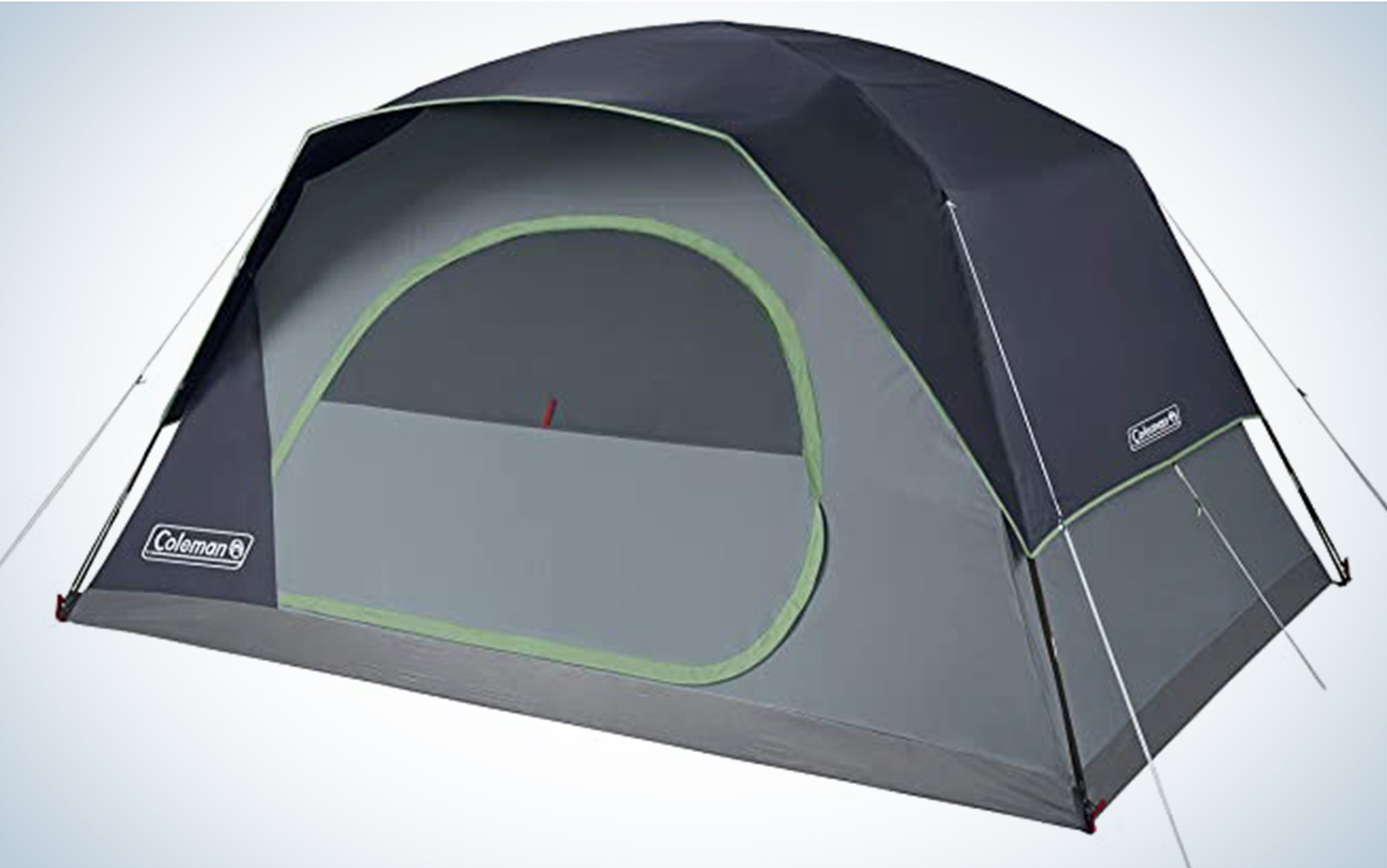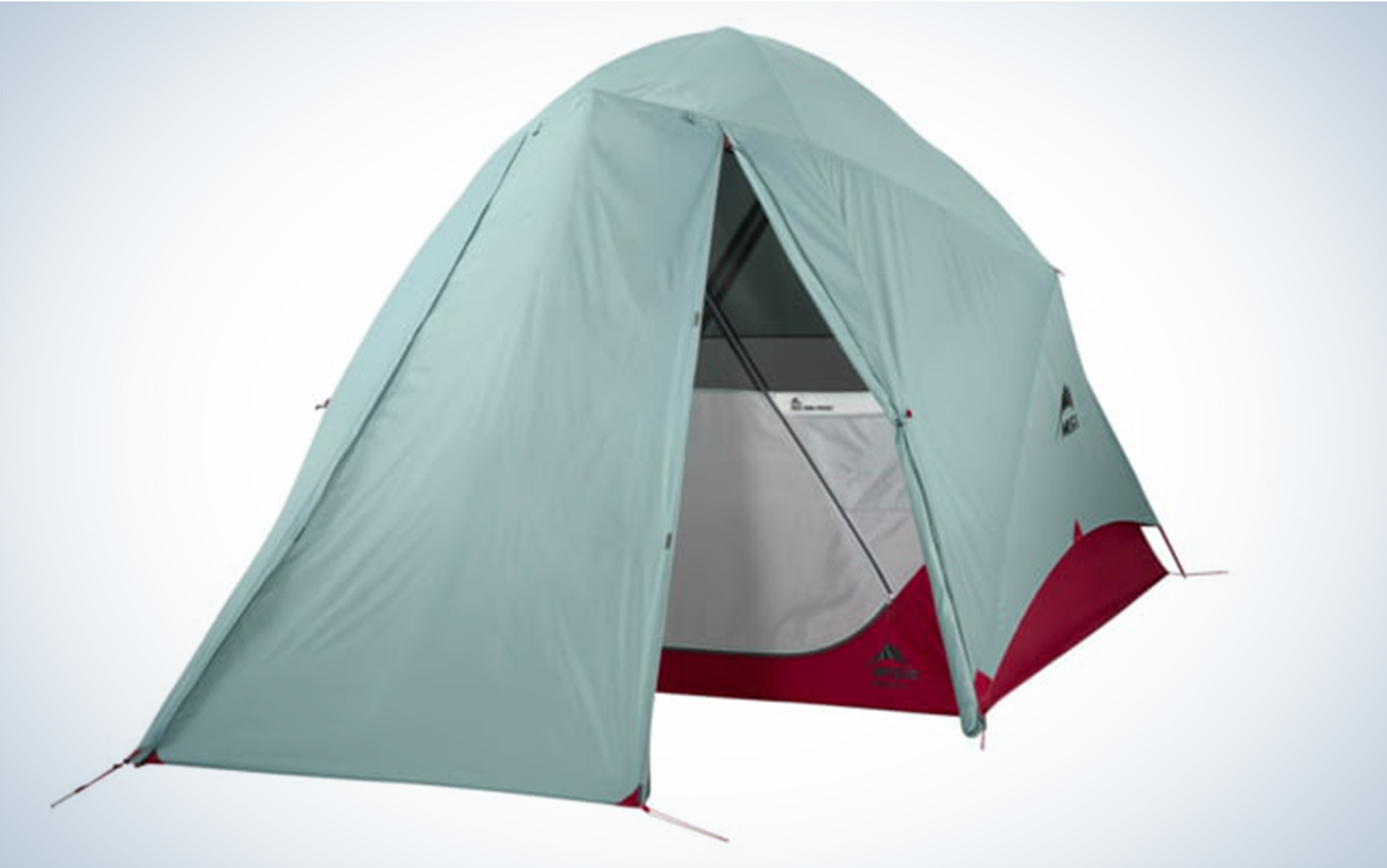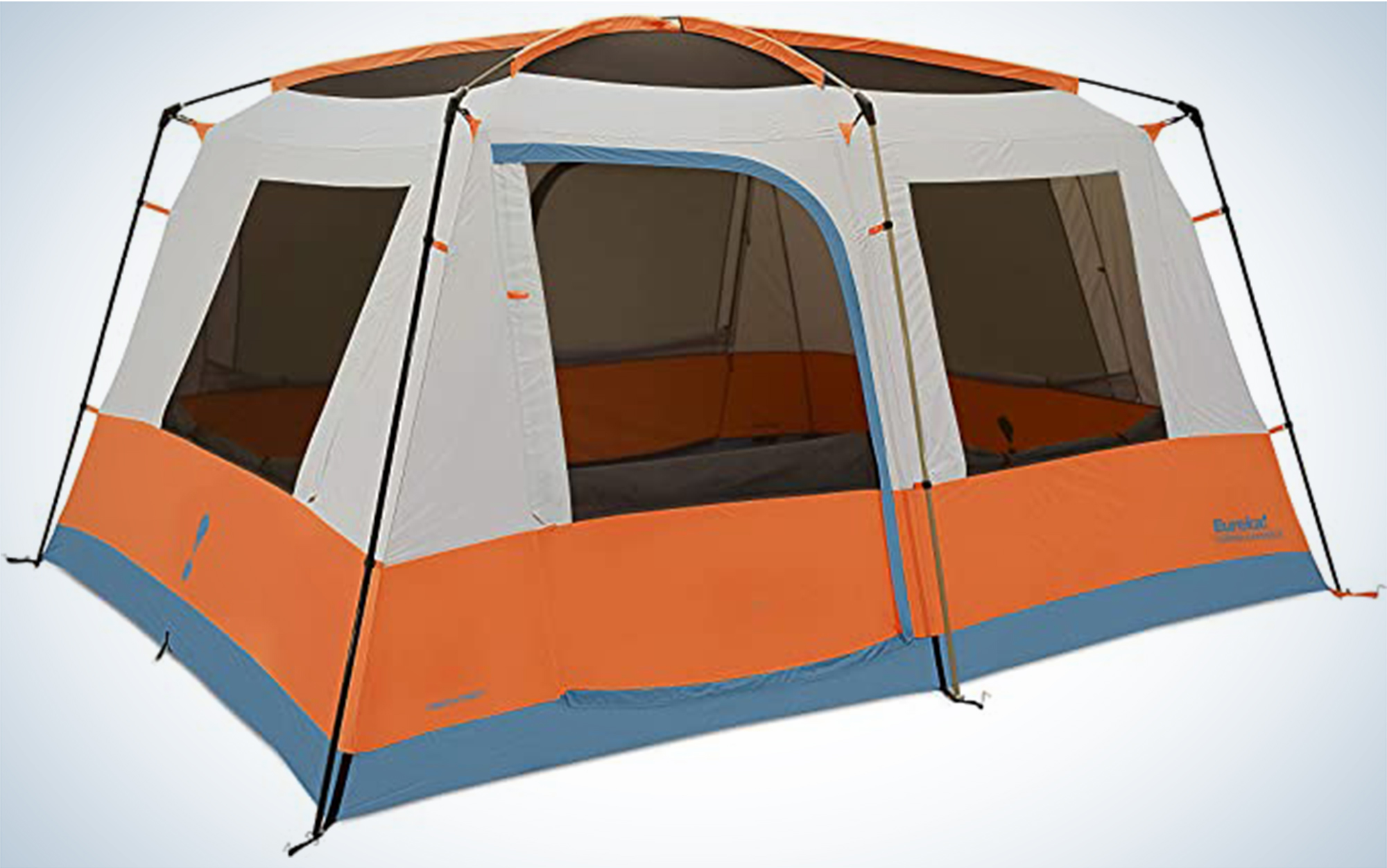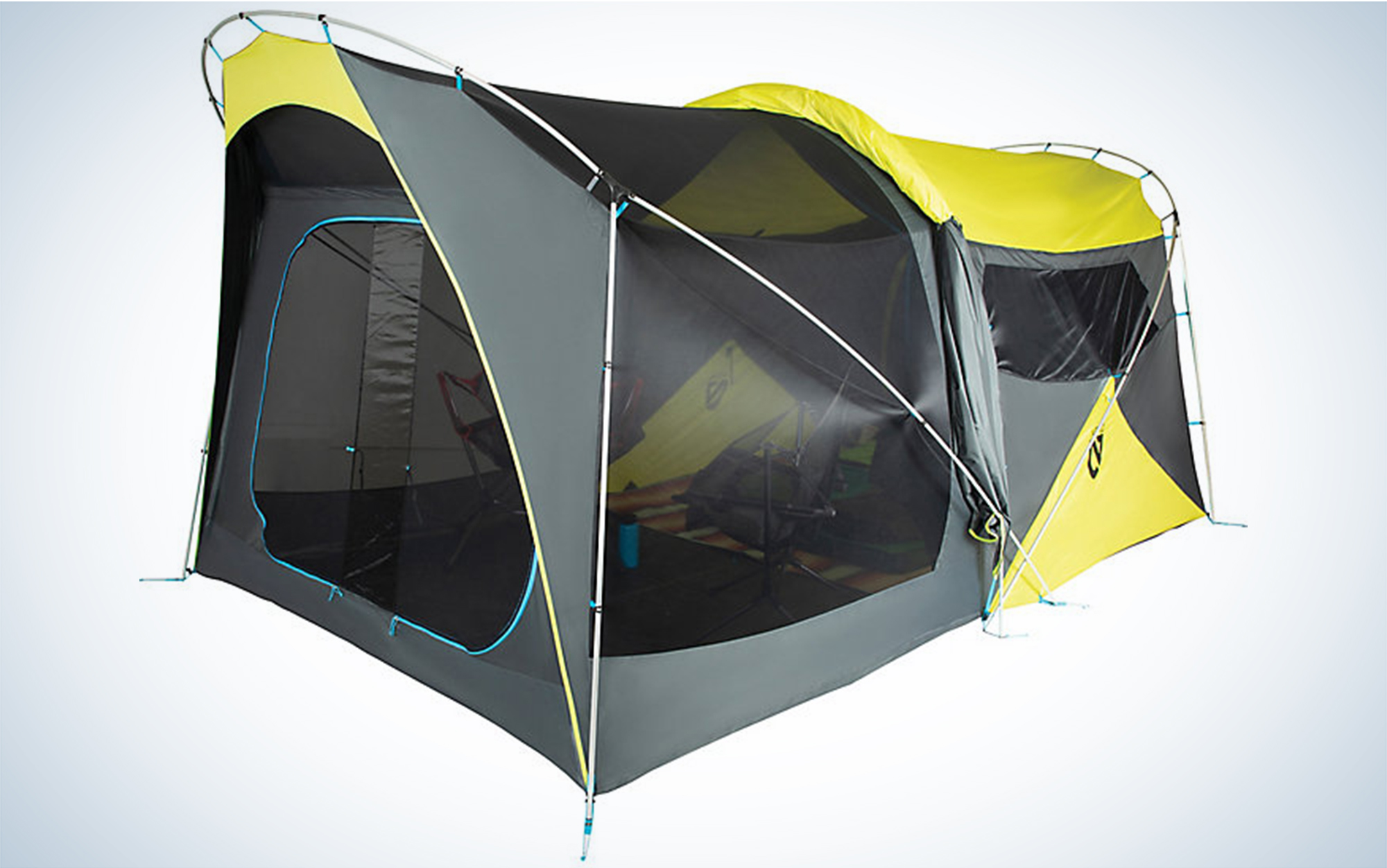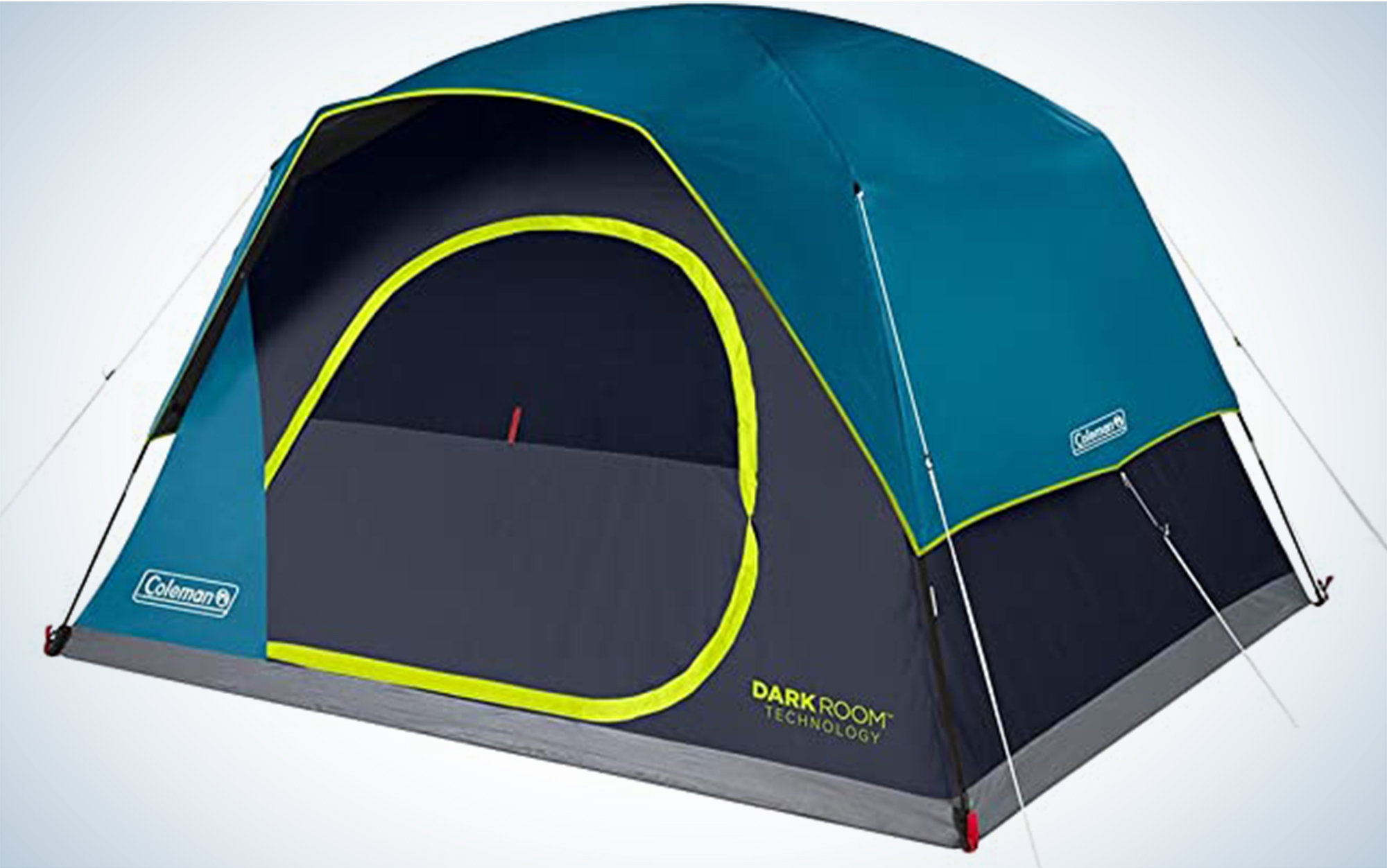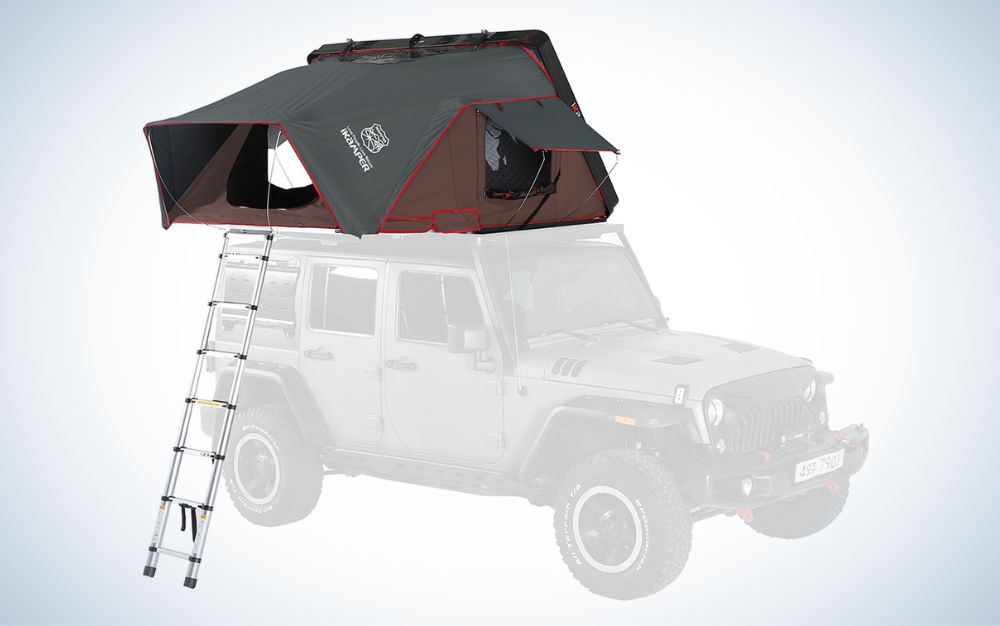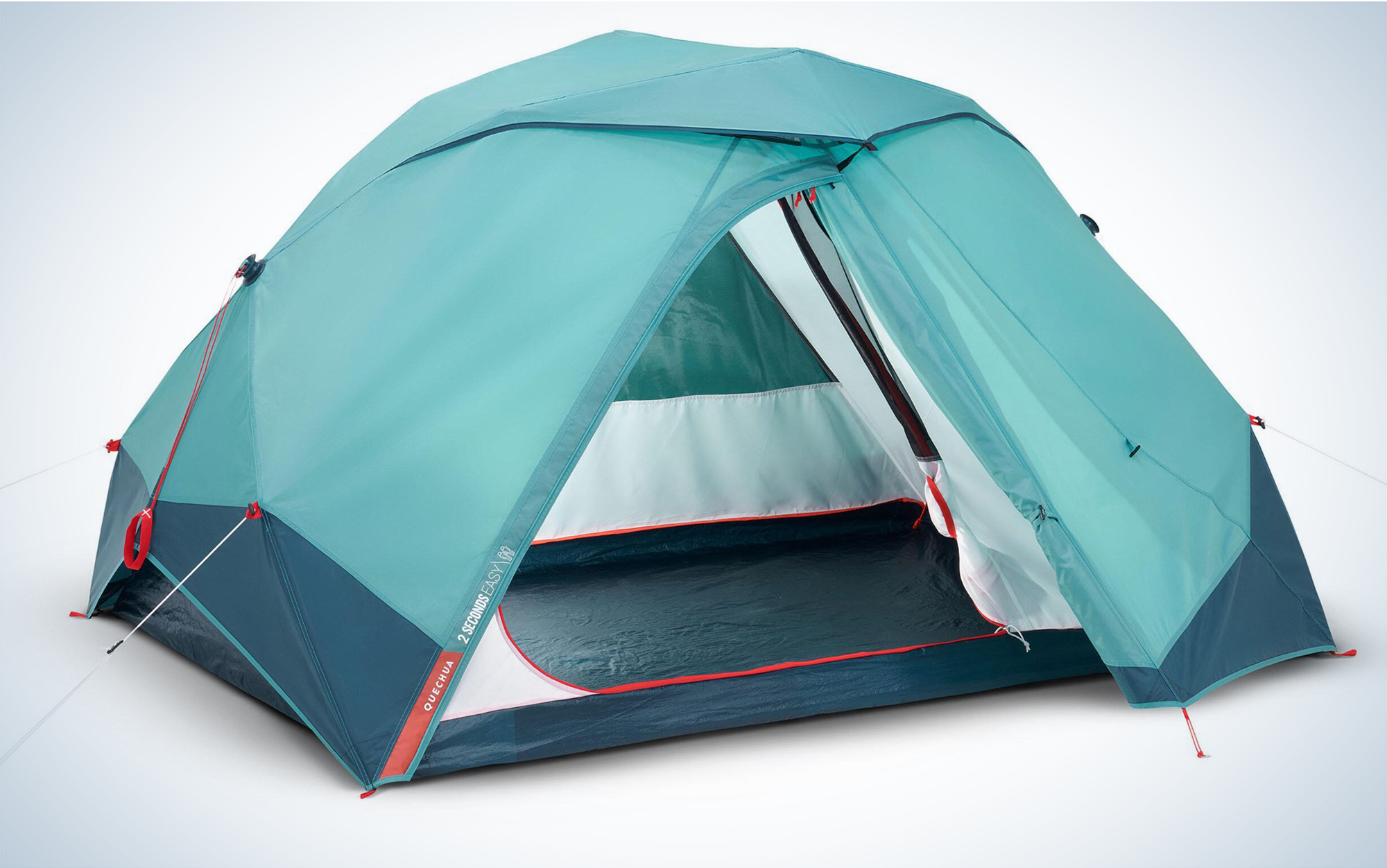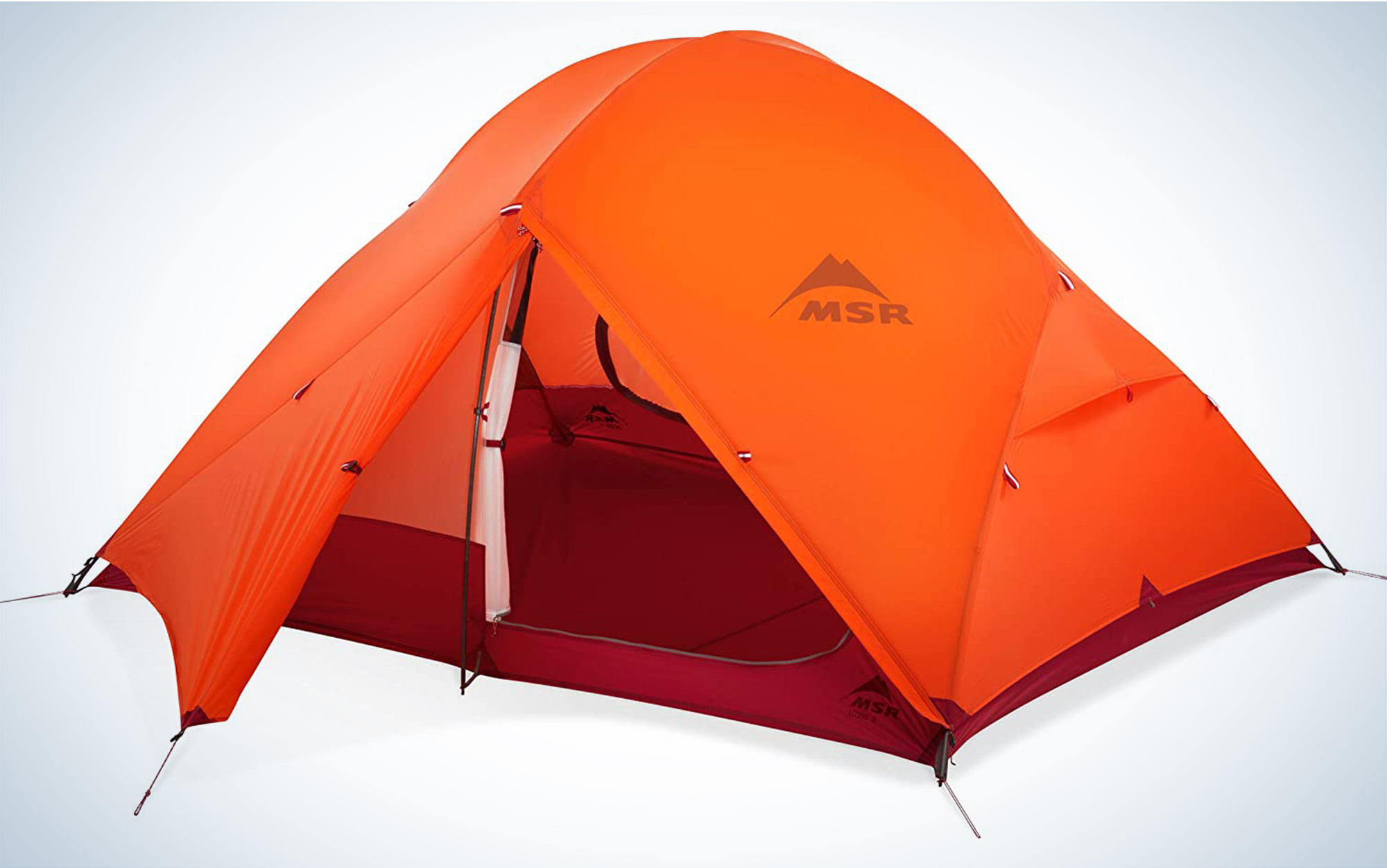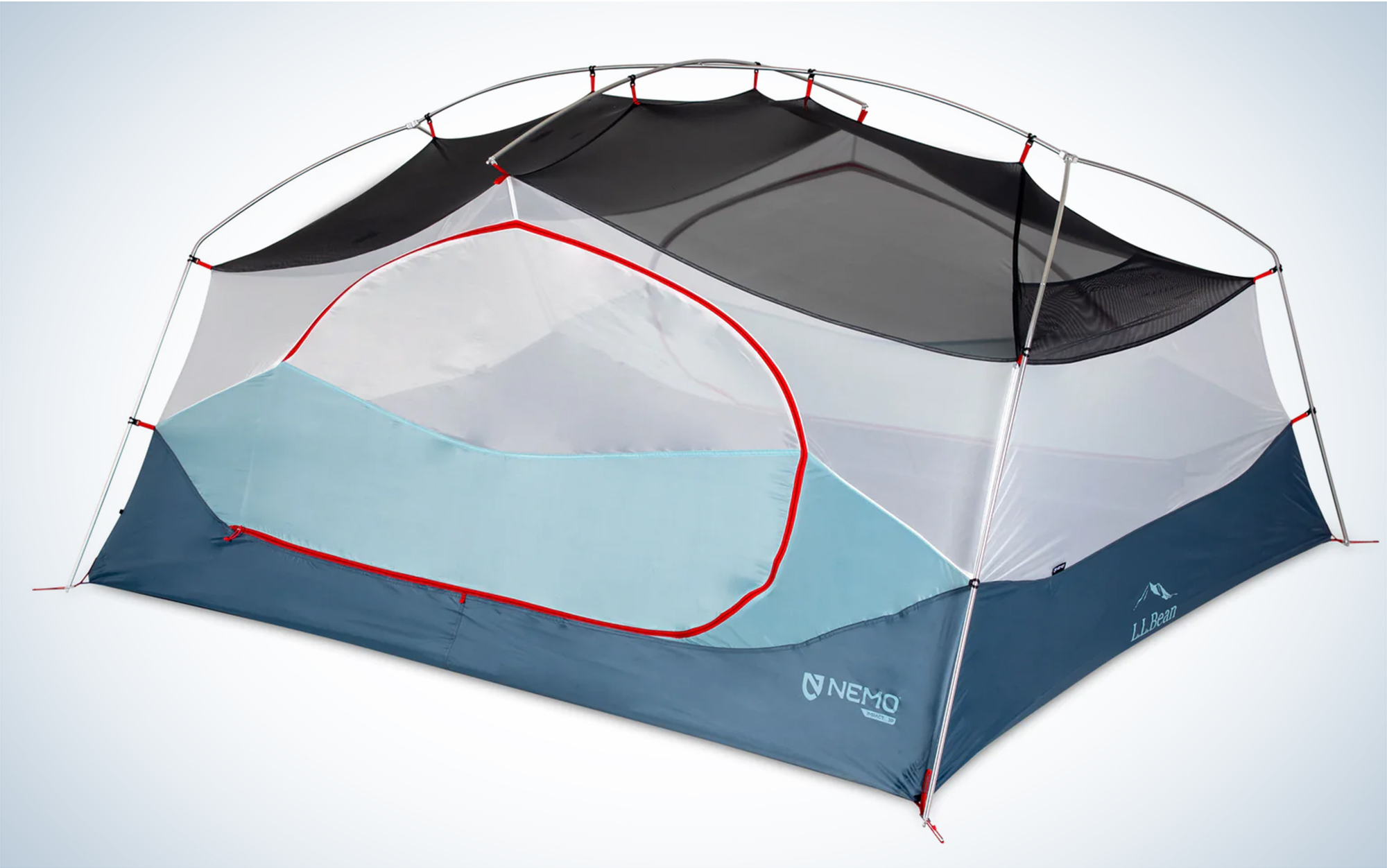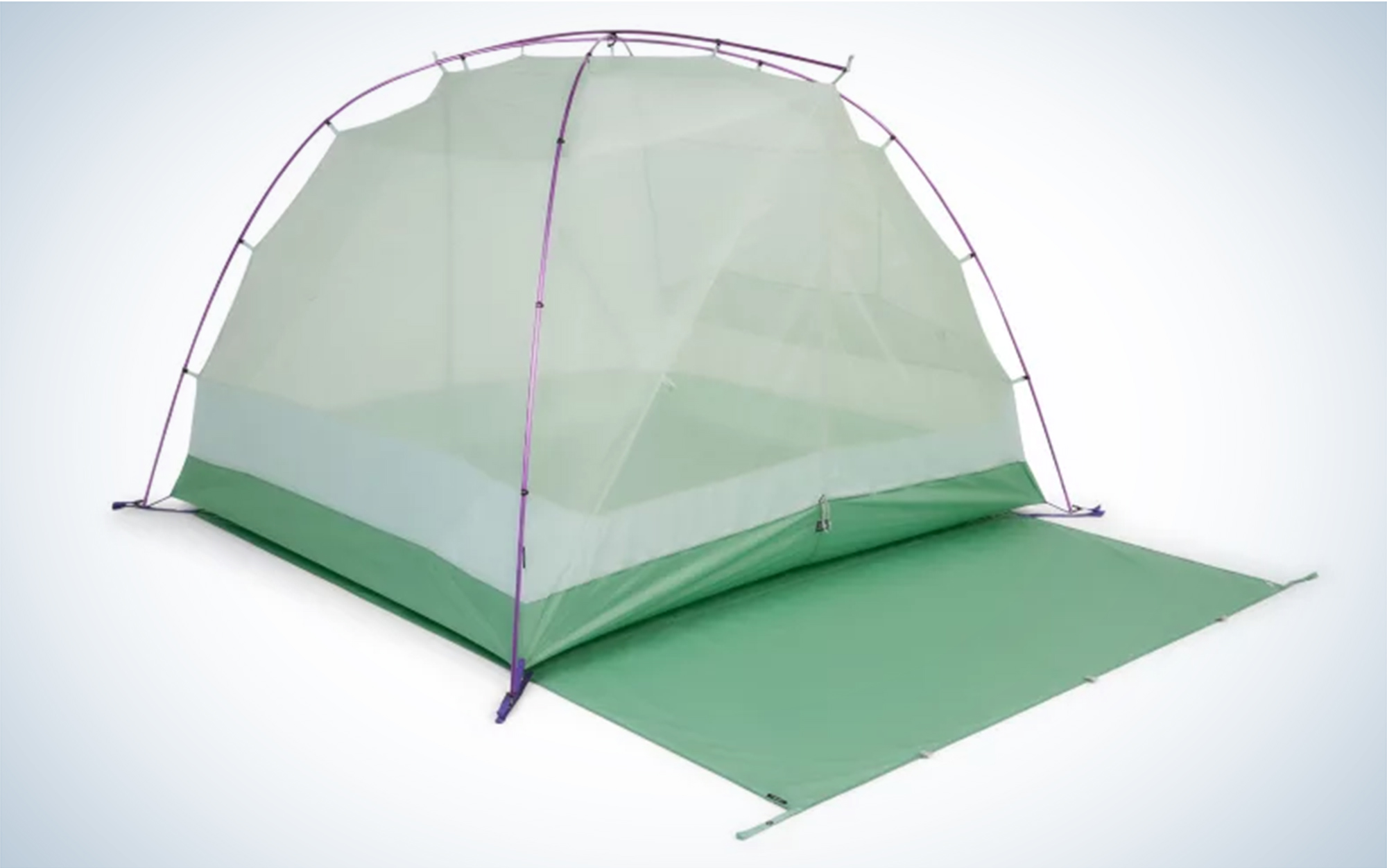We may earn revenue from the products available on this page and participate in affiliate programs. Learn More ›
Published Mar 23, 2023 1:26 PM
Whether you are gearing up for your first overnight or upgrading your existing camping tent, there are a lot of choices to sift through. Outdoor Life has been testing camping and backpacking tents for years on trips both big and small. To help you choose the best camping tent we’ve rounded up a number of our favorite picks here, plus a few new models that should be on every camper’s radar.
How We Tested the Best Camping Tents
I have camped in hundreds of campgrounds across North America in conditions ranging from exposed desert to temperate rainforest to packed snow. In that time, I’ve camped solo, shared tents with a significant other, and a three-year-old kid that started camping when she was six months old. I drew on this wealth of experience to help determine which camping tents work best for different purposes.
For this story, I looked at a number of in-depth tests that Outdoor Life has done in the past, including the best 8-person tents, the best rooftop tents, the best 2-person tents, and the best 4-season tents. I also tested newer models from NEMO, MSR, Mountain Hardwear, and Decathlon that have impressive features, boasting fast setup times, eco bonafides, massive front porches, and more.
The Best Camping Tents: Reviews & Recommendations
Best 2-Person: Coleman Skydome
Key Features
- Weight: 9 pounds, 10 ounces
- Floor Dimensions: 84 inches x 60 inches
- Peak Height: 48 inches
- Poles: Three
- Doors: One
Pros
- Tallest ceiling of any 2-person tent I’ve tested
- Roomy fit for two people
- Low price
- Heavy-duty bathtub floor excels at keeping puddles at bay
Cons
- Small vestibule door
- Fly setup is less straightforward than the tent
The Coleman Skydome 2-Person Camping Tent was my pick for the best two-person tent for a number of reasons: It’s relatively simple to set up, it’s got a spacious interior, and it’s affordable.
You’ll inevitably spend a little more time in your tent car camping than backpacking. Lazy early mornings, an outfit change after your afternoon hike, a pre-dinner nap—so you want a tent that you, and your camping partner, can stretch out comfortably in. Besides having the most generous square footage of any tent in my test, what set the Coleman Skydome Tent apart from its competition was its height: an impressive four feet. While many 2-person tents only have space for one person, the 60 inches of width means that not only can you fit yourself and your adventure partner (snuggling optional; the tent is wide enough to accommodate a queen-size sleeping pad), but also a four-legged friend.
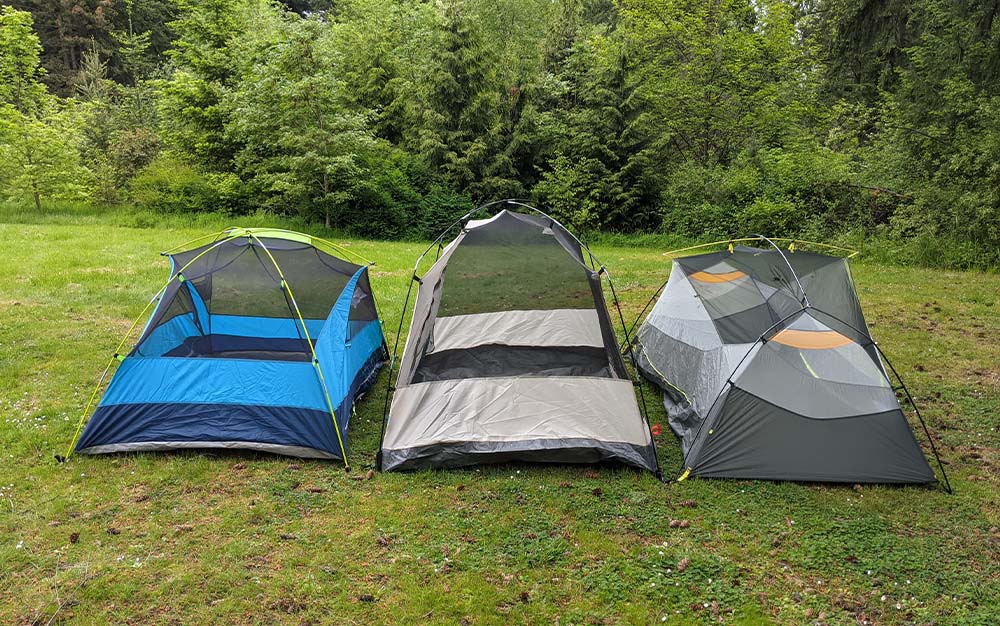
The drawback of this tent is that it is less intuitive to set up than others in my test—I had to go back to the directions multiple times to figure it out. The two poles, which are connected to the tent body (a boon to anyone who has ever forgotten their poles at home) snapped into place with the end sliding easily into a pouch on the opposite corner and the tabs clicking into place. But when it came time to put on the rainfly, it took some searching to figure out where the pole slid into the underside of the rainfly. But once it was set up, the trouble was worth it, as this is the best awning I’ve ever seen on a 2-person tent—better than a lot of four-person tents.
Despite being a 2-person tent, the Coleman Skydome only has one door, which is less than ideal if you are on the wrong side of the tent when nature calls in the middle of the night. Worse, the door is pretty small, limiting the view outside the tent on a buggy day. It also has only one dedicated mesh pocket on the interior for stashing odds and ends like headlamps and glasses, while other tents in our test have as many as three per person.
Best 4-Person: MSR Habiscape
Key Features
- Also available in a 6-person model
- Poles: Six
- Doors: Two
- Peak interior height: 73 inches
Pros
- High ceiling height extends around the tent
- Great stuff sack
- Designed to handle inclement weather
Cons
- Smaller vestibule than other 4-person tents
The MSR Habiscape is one of those tents that doesn’t look like much when you first set it up, but the longer you spend with it, the more it starts to grow on you. It starts with the headspace—plenty enough for this five-foot-five gear writer to stand up in, not just at the center, but also along the sides and at the doors. Then there are the pockets—10 in total—including two that can be accessed from outside the tent (no more taking off and putting on your rain jacket and shoes just to store the car keys).
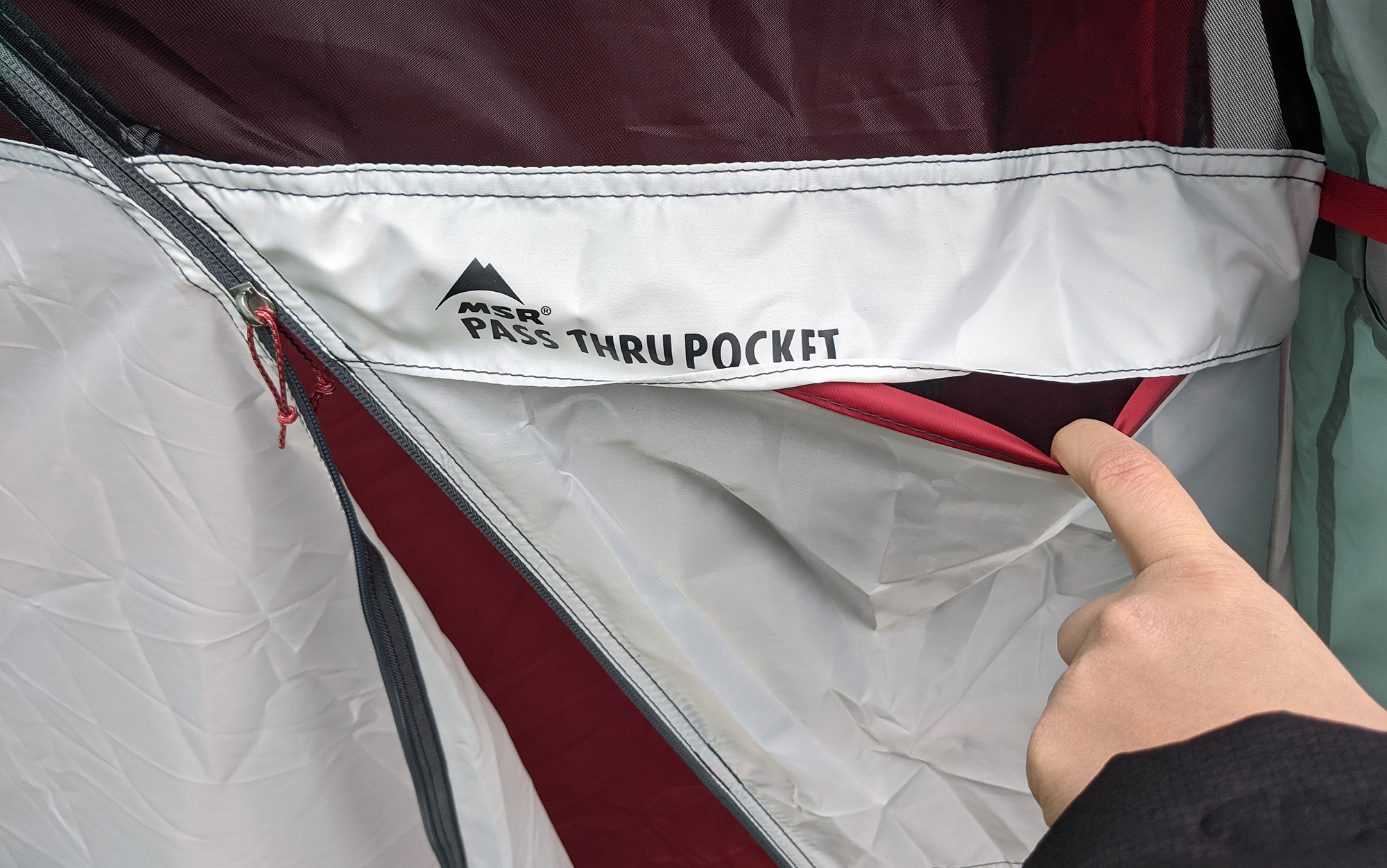
But what really stood out on my windy testing day was the structural integrity of this tent. Like most tents of this type, it has two long poles that crisscross at the center to create its basic structure. What’s different here are the four additional shorter poles that connect the upper portion of the four walls together (these go up very fast compared to most tent poles). When I pushed against the sides and the ceiling there was barely any give, and the winds made very little impact, even without the guylines set up.
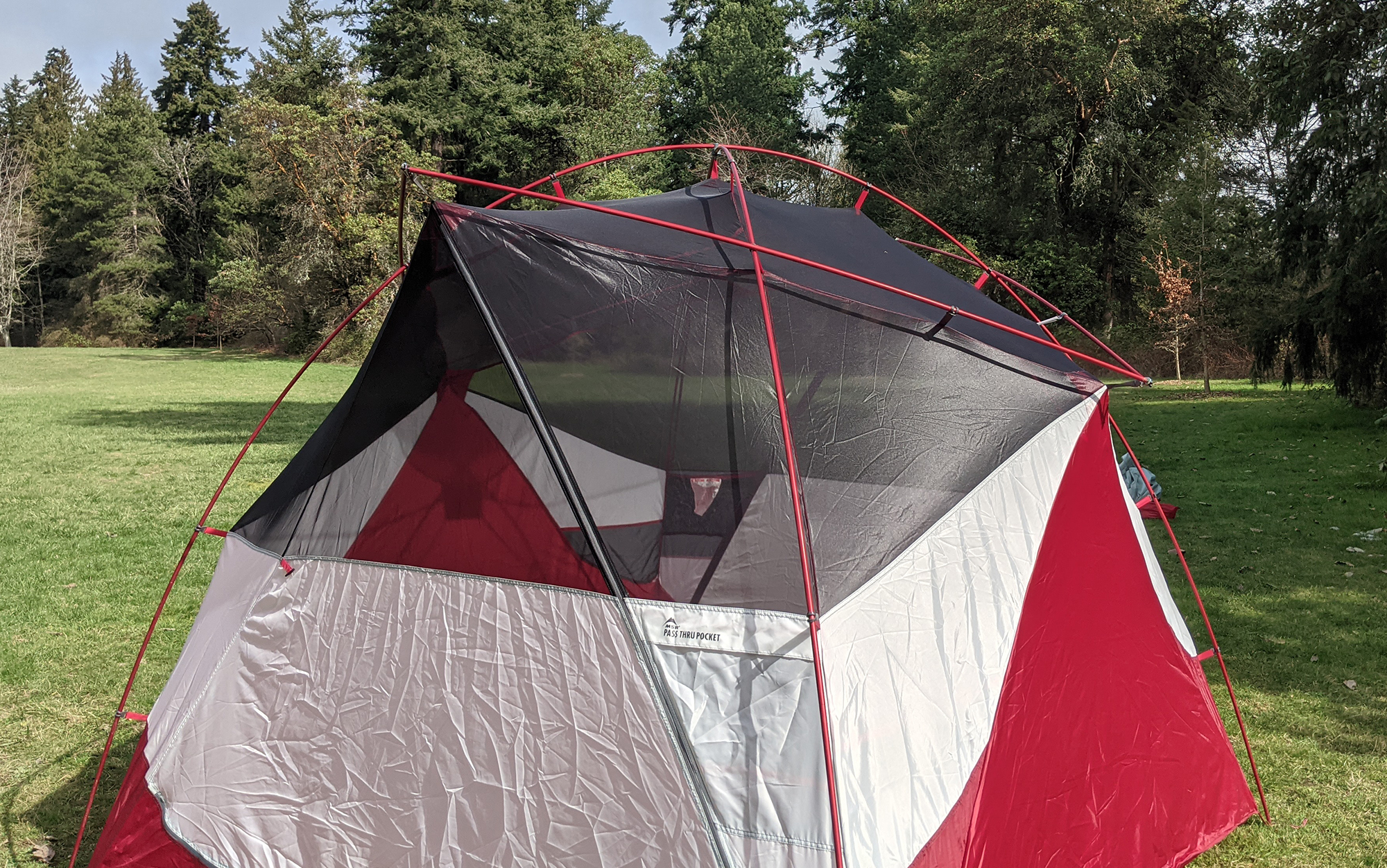
Finally, the stuff sack was great. That might seem like an unimportant detail when you are first setting up your tent, but when it’s time to pack away at the end of the weekend—the rainfly soaked from an overnight shower, dirt stuck to the bottom of the body—the excellence of the stuff sack becomes clear.
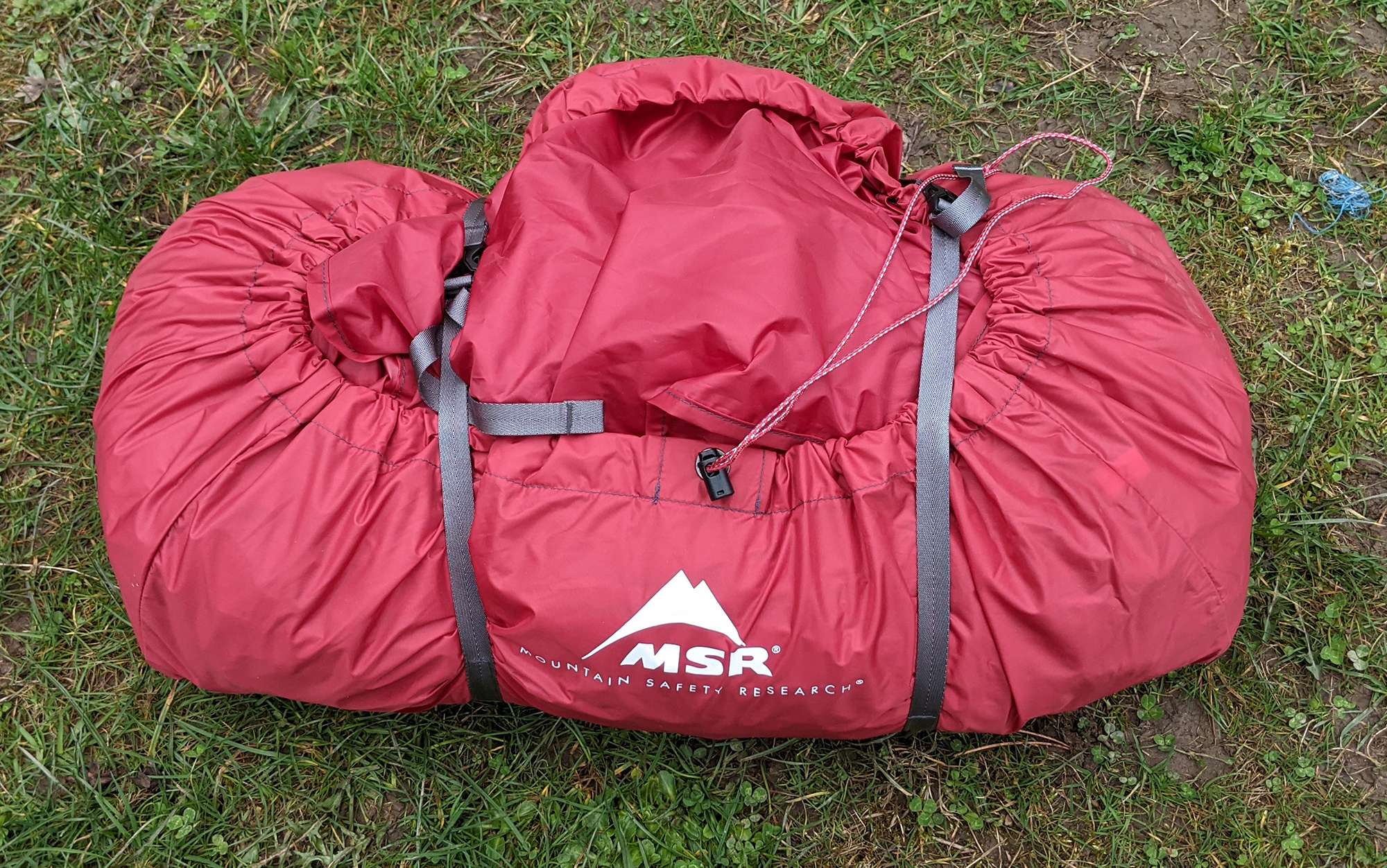
While most tent stuff sacks open at the end, the MSR Habitude stuff sack opens along the side. After a drizzly morning of testing, instead of carefully rolling up the tent into a cylindrical burrito, I simply stuffed the rainfly and body in as best I could, shoved the stake and pole bags on top, cinched the cord and tightened the compression straps. It wasn’t pretty, but it was now ready for transport with a minimum of hassle (naturally, I dried it properly at home).
Best 8-Person: Eureka Copper Canyon LX8
Key Features
- Dimensions: 13 feet x 10 feet
- Height: 7 feet
- Weight: 33.5 pounds
- Poles: 10
- Packed Size: 11 inches x 29 inches
- Doors: Two
- Windows: Six
Pros
- Great livable space on the interior
- Withstood both rain and wind on the testing trip
- Lots of doors and windows
Cons
- Most complicated setup in my test (fortunately the provided instructions were easy to follow)
- Heavy
The winner of OL’s best 8-person tents test was hands-down the Eureka Copper Canyon LX8. While it wasn’t the easiest to set up, it provided superior weather protection at an affordable price point—and had great head space. It has six windows and two doors (so excellent ventilation) along with near-vertical walls that my over 6-foot testers could stand up under with room to spare.
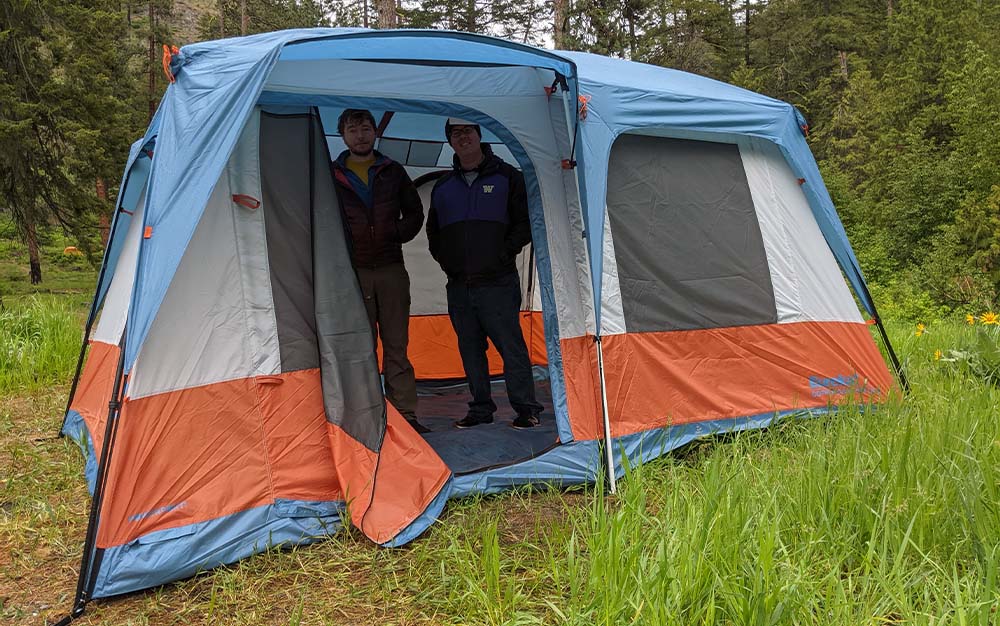
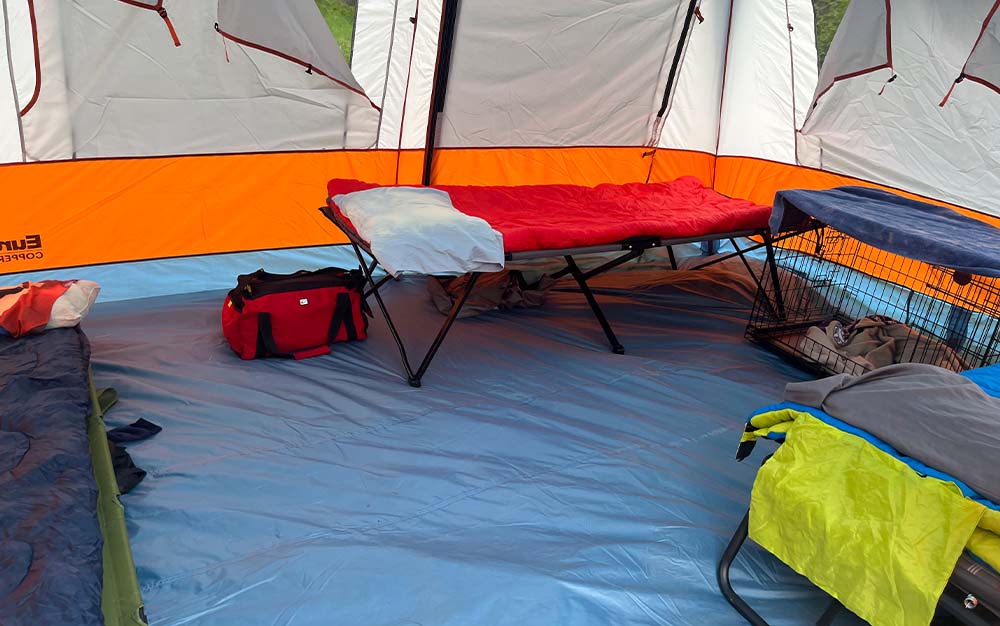
While the strongest winds during testing buffeted the sides of this family tent, it bounced back quickly without damaging the fiberglass poles. At one point the rainfly came unattached at a corner, but after a member of the testing group re-secured it with the provided velcro tabs (which I forgot to do during the initial setup), it wasn’t a problem. And the rainfly turned out to be plenty of protection against overnight rain once the windows were zippered up.
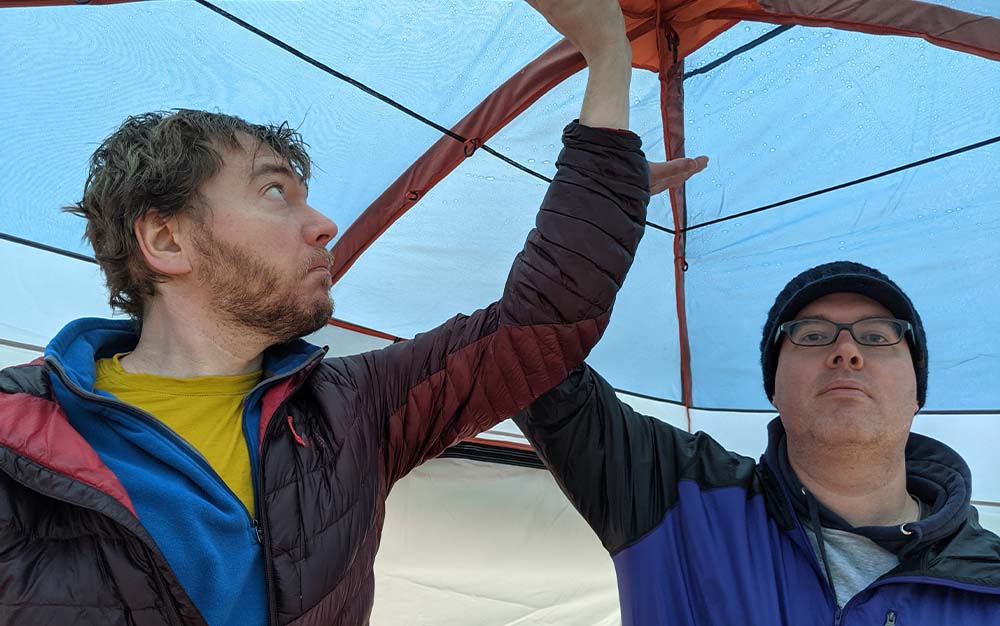
The only downside to this tent is that it is an unusually complicated setup. Three fiberglass poles crisscross the ceiling and then connect to six steel poles at each end to form the walls (the tenth pole creates the awning over the doorway). The directions for this were reasonably easy to follow—it just took a while. While I was able to set up the body of this tent by myself, a second (taller) person was needed to add the rainfly.
Best for Groups: NEMO Wagontop 8-Person Camping Tent
Key Features
- Dimensions: 15 feet x 8.3 feet
- Height: 6.5 feet
- Weight: 30 pounds, 3 ounces
- Poles: Three
- Packed Size: 28 inches x 13 inches x 13 inches
- Doors: Two
- Windows: Two
Pros
- Large interior space would easily accommodate three queen-size camping mattresses
- Single person setup
- Handled winds better than any tent in my test
Cons
- Leaked (small, but still) in the rain
- Expensive
Given the massive size of the NEMO Wagontop 8, 125 square feet and over 6.5-feet tall, I was surprised that I was able to set this one up by myself. The hat trick here is that while other 8-person tents have a separate rainfly that must be secured to the tent after setting up the main body, the Wagontop 8 only has a separate rainfly for half of the tent (the other half is a solid 75D polyester along the top), and it’s attached to the center of the tent. But that isn’t to say that the setup of the Wagontop 8 was a breeze. The tent design here is unusual, and even after checking the directions it took me two tries to get the poles set up in the right direction.
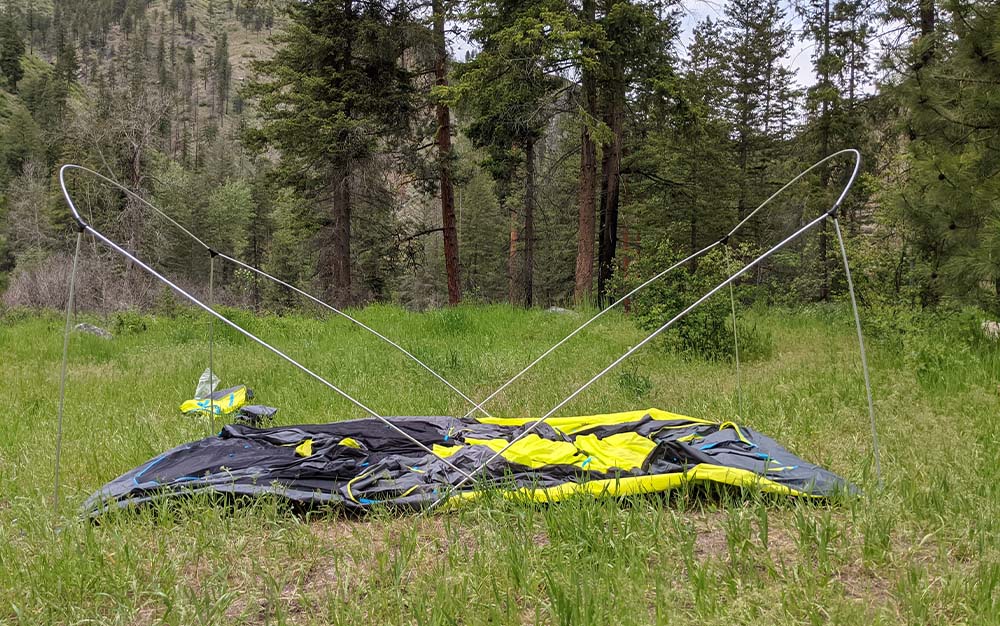
But once I had the poles up correctly, it was a cinch to snap up the body of the tent, thread the middle pole through the center line, and secure the rainfly over the top of the tent.
This was the first tent I set up in my test, when the winds were gusting the most, and I was impressed with how the Wagtontop 8 handled the less-than-ideal weather. Even when the tent walls buffeted, the integrity of the poles held fast, not bending in the slightest. Given the weather conditions, I chose to secure several of the guylines of this tent in addition to tightening the rainfly flaps and checking that the stakes were providing sufficient tension.
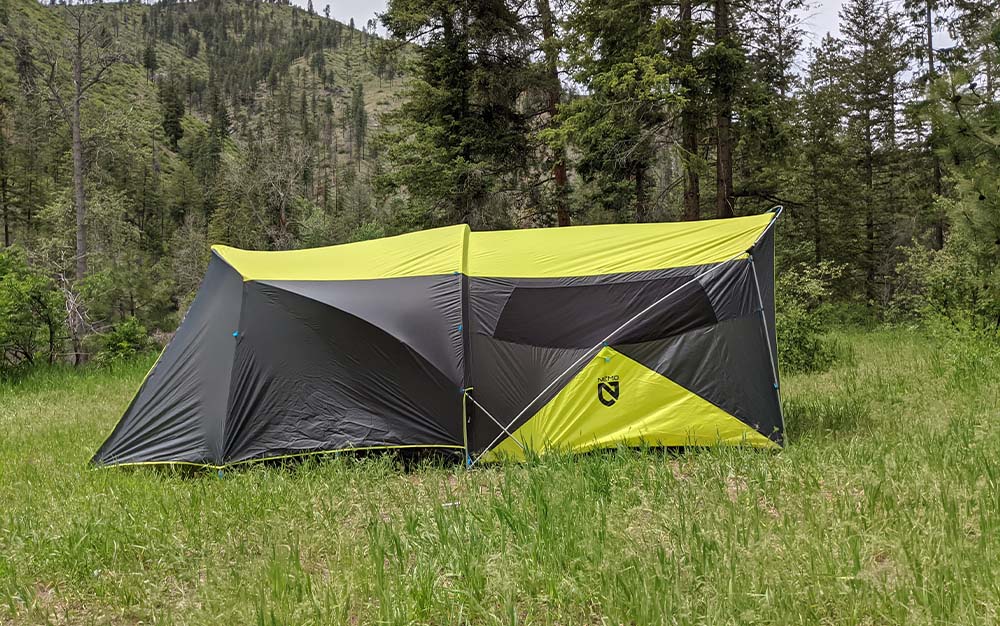
Unfortunately, the position of the guylines were low enough that the solid ceiling portion of the tent (without the rainfly) continued to buffet in the wind. Fortunately, the winds died down before it was time to put our toddler to bed.
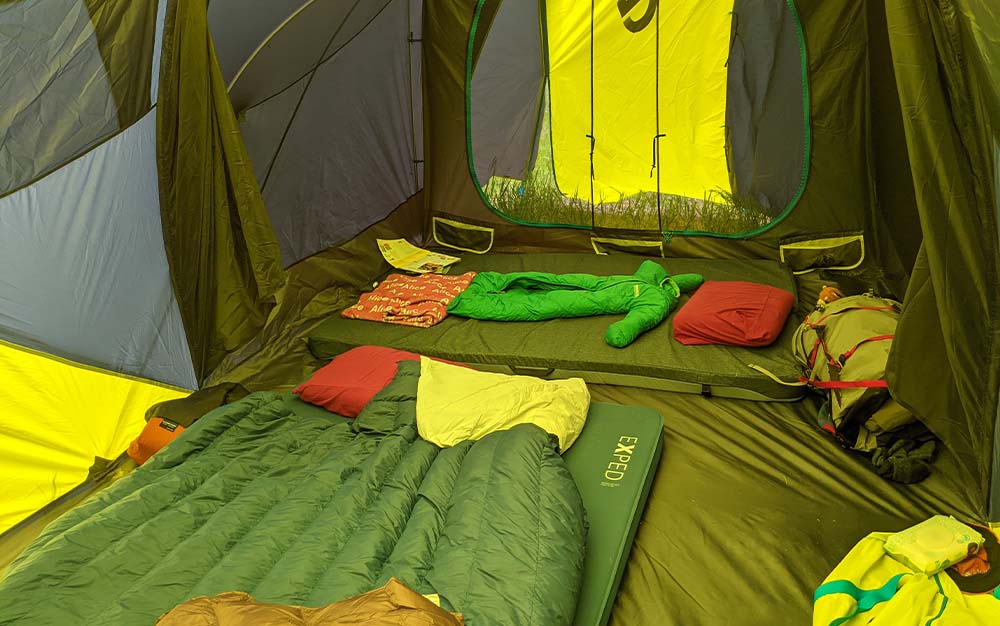
The interior of the Wagontop 8 was impressive, wide enough to accommodate 3 queen-size air mattresses, and my family of three was swimming in it (no complaints here). If you are looking for a true 8-person tent, this one is getting awfully close—my estimate is that you could comfortably fit 7 adults on single pads in this one.
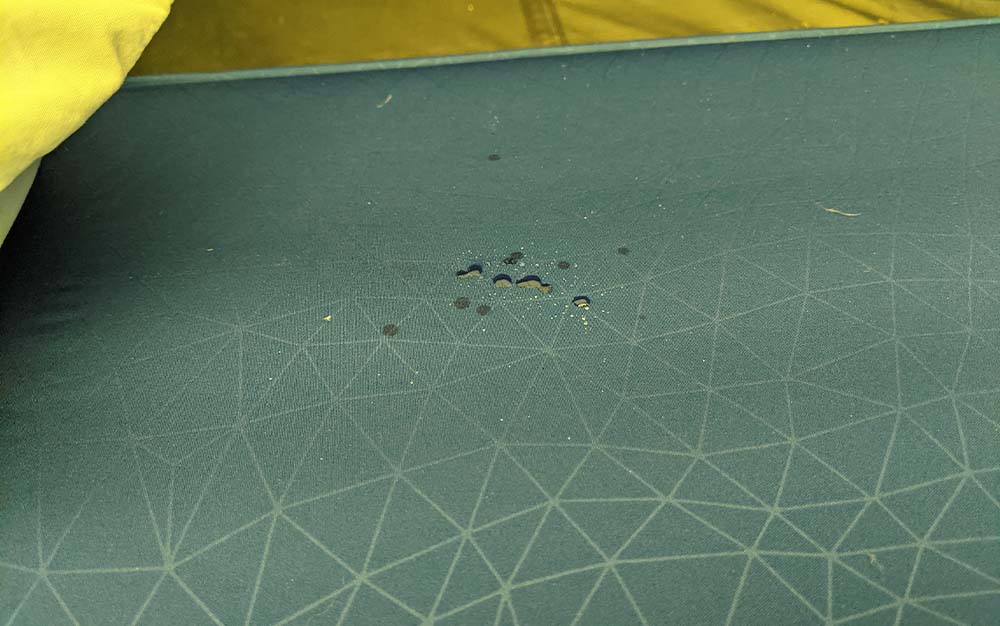
While the Wagontop 8 handled the wind great, it did develop a small leak when it rained overnight, right in the center of the tent. During disassembly, the reason for this became clear: a sizeable amount of water that had pooled at the top of the tent poured off after I removed the center pole. I suspect that this leak might not have occurred if the tent had been pulled taut, but after three days of wind this tent had developed some slack, even with a number of the guylines up. Considering the price of this tent, I would have expected it to handle the rain better, especially given that these were intermittent PNW showers, not a true downpour. If you expect overnight rain, be sure to check that the tent is fully taut before hitting the hay.
Best for Light Sleepers: Coleman Dark Room Skydome
Key Features
- Available in 4-person, 6-person, and 8-person models
- Poles: Three
- Doors: One
- Windows: Zero
Pros
- Dark interior is perfect for midday naps or camping during the summer solstice
- Reasonably easy setup
- Affordably priced
Cons
- Smaller than other tents with the same claimed capacity
If you’ve ever planned to sleep in while camping, then woken up as soon as the sun hits your tent at five in the morning, then the appeal of the Coleman Dark Room Skydome is pretty clear. In the middle of the day, with the sun brightly shining down on you, you can go inside this tent and it’s pretty close to pitch black. Just a small amount of light sneaks in at the corners and around the edge of the door. It’s also much cooler than comparably enclosed tents.
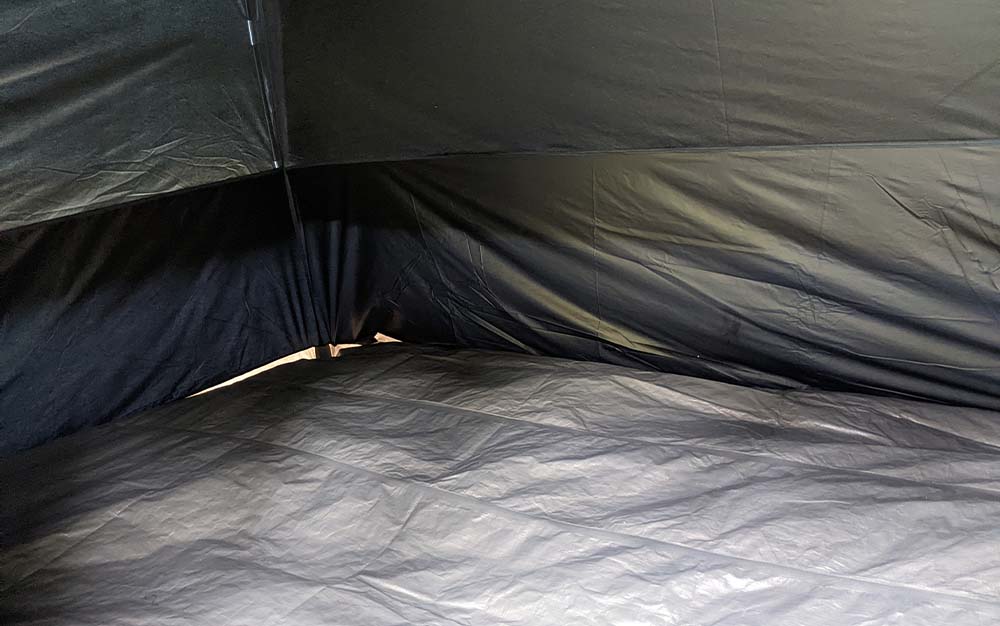
This tent (I checked out the 8-person model) was also fairly easy to set up. The two main poles, which are attached to the far corners of the tent, simply crisscross over each side—a super simple design that will be familiar to anyone who has ever used a 2-person tent. Unfortunately, this design also comes with some limitations. The so-called 8-person model is only 108 square feet. I would not recommend trying to squeeze more than four people in this tent, maybe five if you are exceptionally good friends. It also buffeted in the wind fairly significantly, although the fiberglass poles survived the encounter.
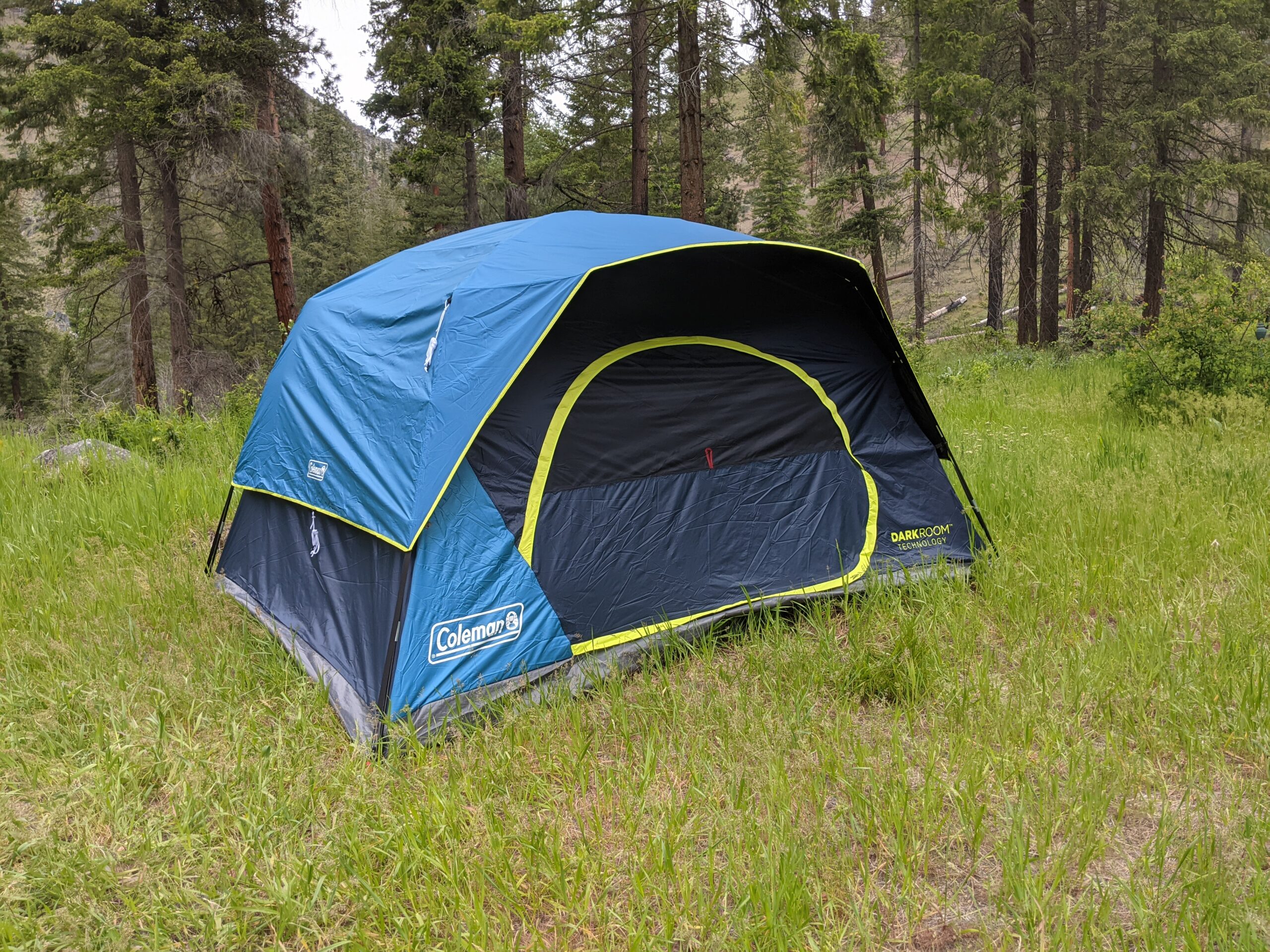
The final pole—a separate fiberglass section that holds the rainfly out over the door was surprisingly difficult to figure out, as there is very little indication on the tent where the sleeve opening is. I also noticed during breakdown that the attached poles made squeezing this tent back in its carrying case a little more complicated than tents where this isn’t the case, although it ultimately fit without too much of a struggle.
Best Rooftop: iKamper Skycamp 2.0
Key Features
- Hardshell case
- Sells for around $3,700
- Weighs 160 lbs.
- Can sleep up to four people
Pros
- Universal mounting system allows it to fit on most vehicles
- King size memory polyfoam mattress
- Easy one minute set-up time
- Multiple layers allow for easy window access during the day and a dark and secure tent at night.
- Four season tent
Cons
- Heavier than other tents and therefore not for all vehicles
The winner of the OL test of the best rooftop tents was the iKamper Skycamp 2.0 roof top tent, which is both a great introduction to roof top camping and a longtime mainstay on the market. The sleek design, spacious tent, and tough shell make the Skycamp a very popular option.
I drive a Subaru Forester, which pushes the weight limit to the threshold, but it’s still below the maximum, making my vehicle not the best choice for this tent, but still doable. Installation of the tent is effortless as long as you have help lifting the 160-pound tent onto your roof rack. From there you just tighten four screws and your tent is secure.
When driving with the tent, you’ll notice some shifting from the wind and the added weight on your roof. It’s also recommended you watch your speed while driving. But, once I got used to it, I hardly noticed it on my car.
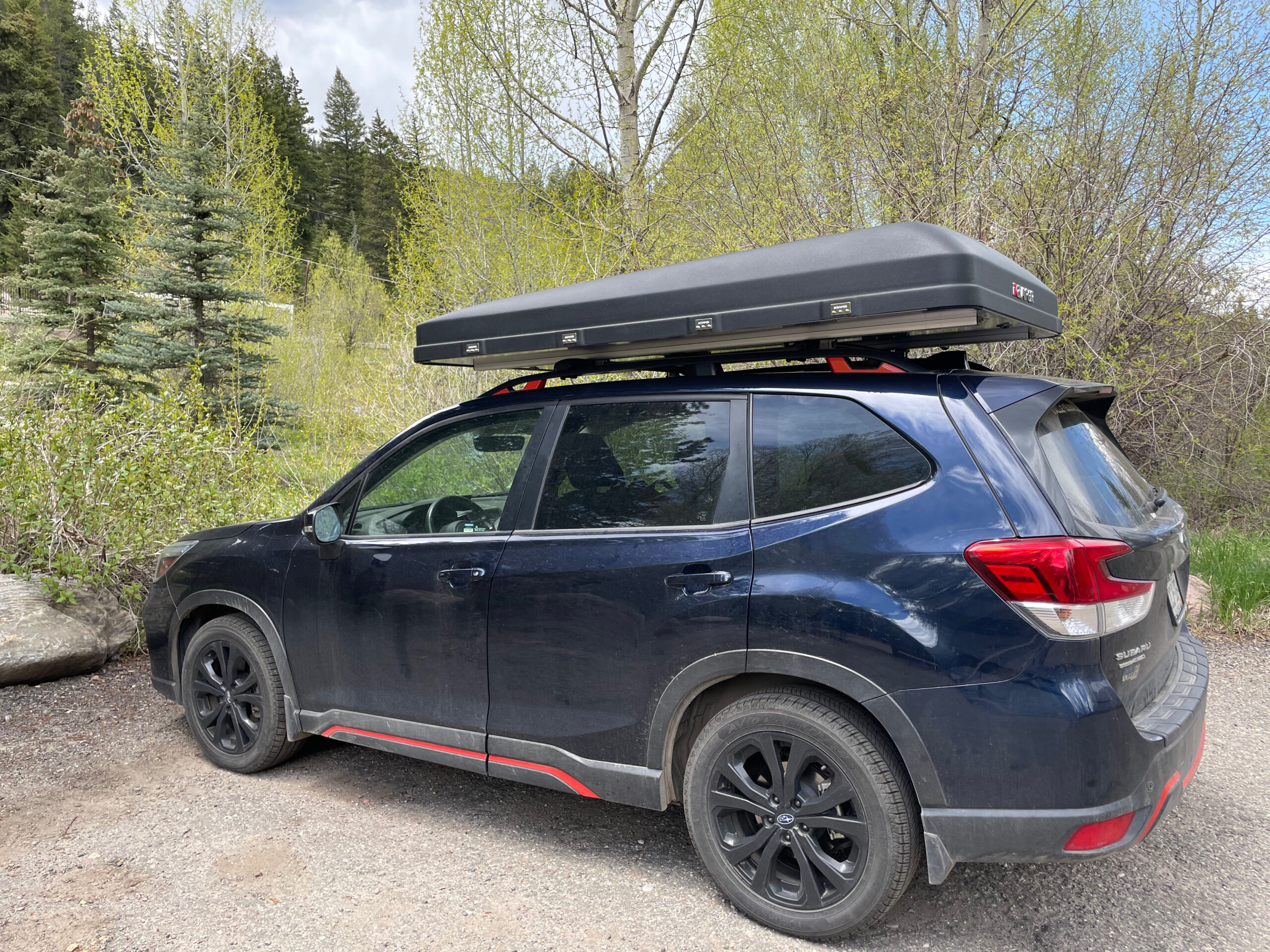
Once arriving at the campsite, the Skycamp 2.0 lived up to the hype of an easy setup. Upon opening the box, the tent pops open, and you’re left only with propping up the doorway and windows. Getting in and out of the tent is easy with the included ladder, which also acts as a stand to keep the tent up. Multiple windows and a skylight also allow plenty of light and airflow throughout the tent.
I spent multiple nights in the tent, both solo and with my wife and toddler. Solo, you have more than enough room for just about anything, but even with two added people, the tent still felt massive inside. Inside the bed, there is a polyfoam king-size mattress taking up the entire floor space as well as some storage pockets along the perimeter. The mattress is extremely comfortable and beats most standard tent setups.
I experienced a good mix of weather by camping in two different regions of Colorado and can say this is a four-season tent. The multiple layer windows allow you to close it with canvas covers, let light in through the plastic screen or leave just the mesh up for easy airflow for warmer weather. With everything closed, we were able to stay warm even with minimal layers and blankets in the canvas tent.
The biggest struggle with the roof top tent is windy weather. At one point, strong winds blew in it, and it was a struggle to get the tent closed. A few minutes of chaos were underway, but once I had the box shut, we were able to move to wait out the storm until things calmed down.
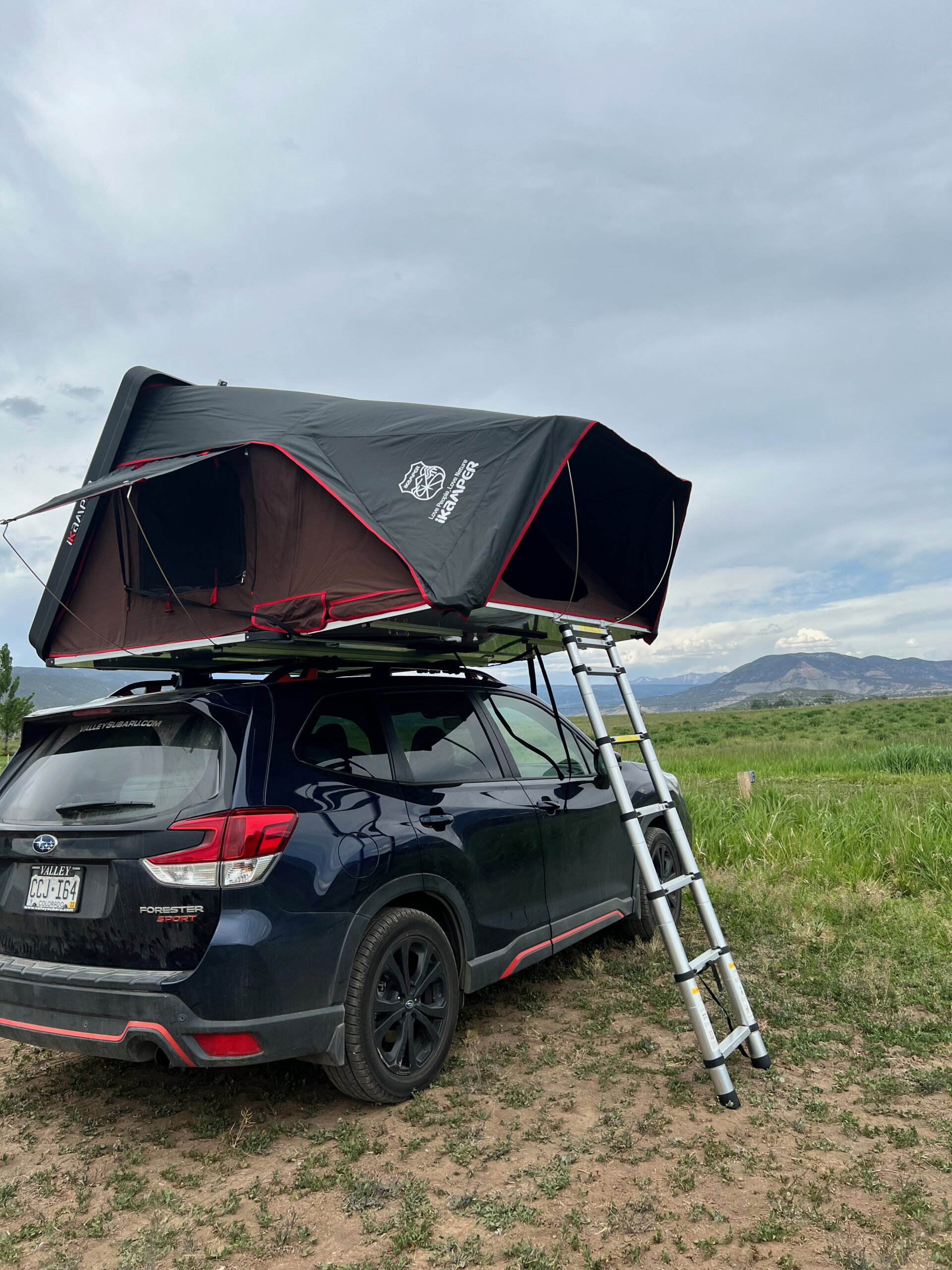
However, inside the tent, you could also feel the strong gusts overnight. I don’t believe the tent was going anywhere, and it was firmly strapped to the roof. Part of this issue may have been my smaller SUV compared to a heavier truck or jeep that could secure the tent more in place and avoid rocking from the strong winds.
iKamper recently released their Skycamp 3.0, a slightly pricier upgraded version of the longstanding popular 2.0. With it comes some improvements like a better mattress and a large hardshell box to allow for some storage such as blankets or a pillow.
Overall, the Skycamp is hard to beat, with a great setup that’s easy enough to use just about anywhere. While not nearly as large as some of these family tents, I can see the Skycamper as the best roof top tent for families or just adventure friends looking for a comfortable space option, as the Skycamp hits all the marks. It also is probably the best for cold weather options with its generous interior allowing for extra blankets while also using its thick canvas as protection.–Alex Murphy
Best Pop-up: Decathlon Quechua 2 Second Pop-Up
Key Features
- Setup: Pull two cords taut, insert six stakes into the ground
- Doors: Two
- Windows: Zero
Pros
- Fast to set up and tear down
- Dark interior allows you to sleep in
Cons
- No way to separate the fly from the tent body
- Fewer pockets than I would have liked
Pop-up tents are popular for one reason: They are fast to set up. But, too often, they are a real chore to tear down or lack the structural integrity of a traditional tent. Not so with the Decathlon Quechua 2 Second Pop-Up.
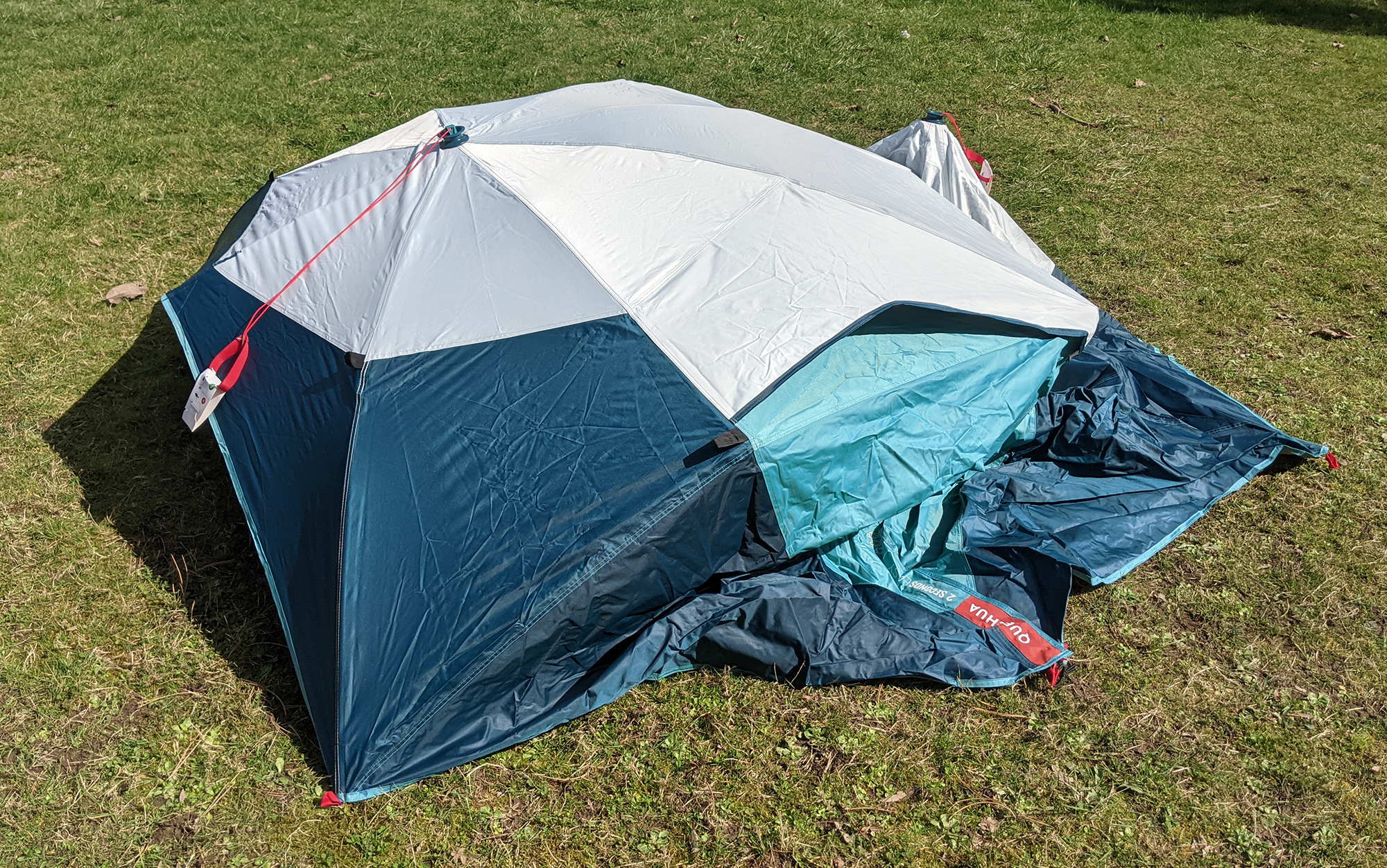
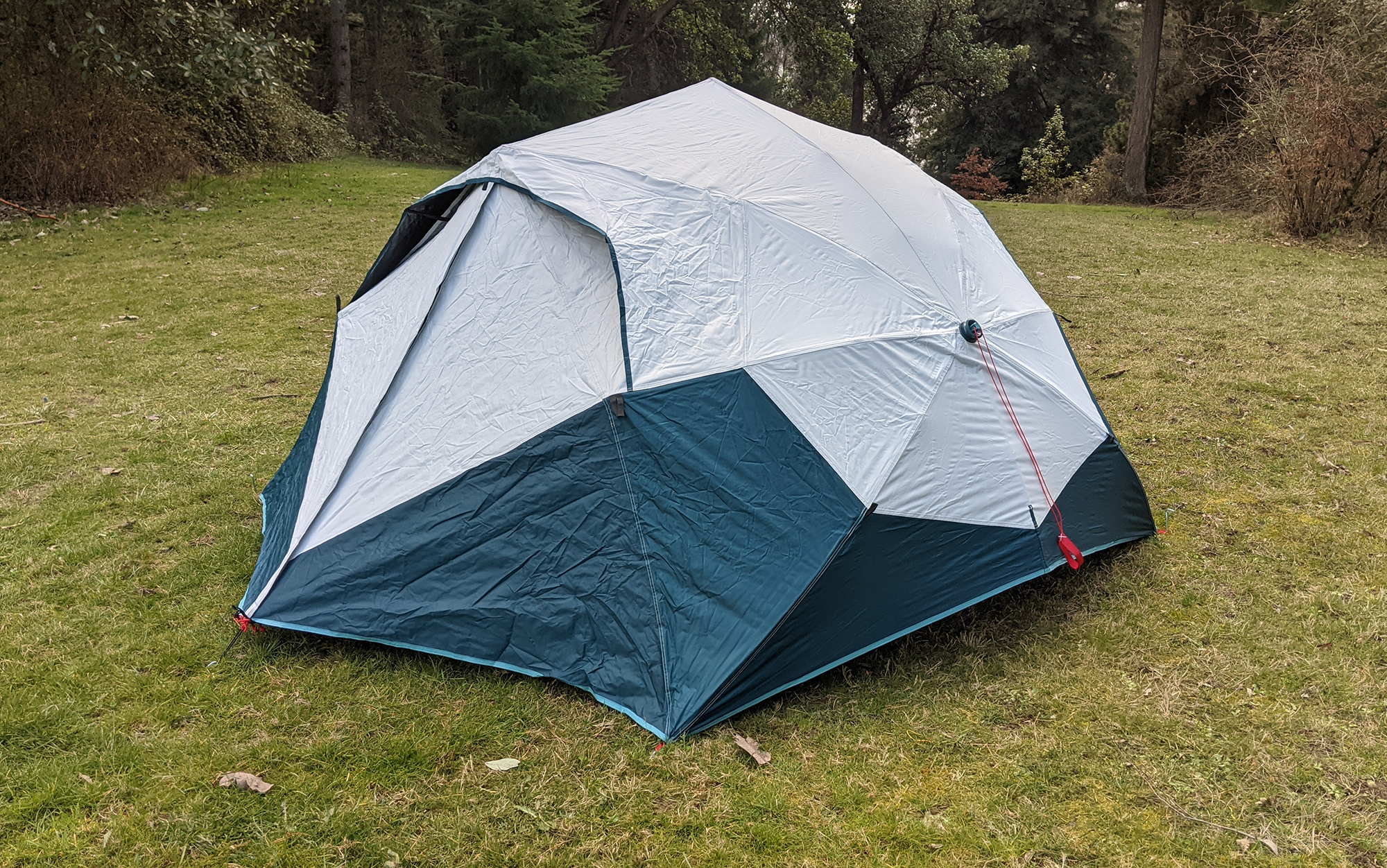
As expected, it turned tent-shaped with two easy tugs on the red pulls at either side of the tent (only thing left to do was put six stakes into the ground to secure it).
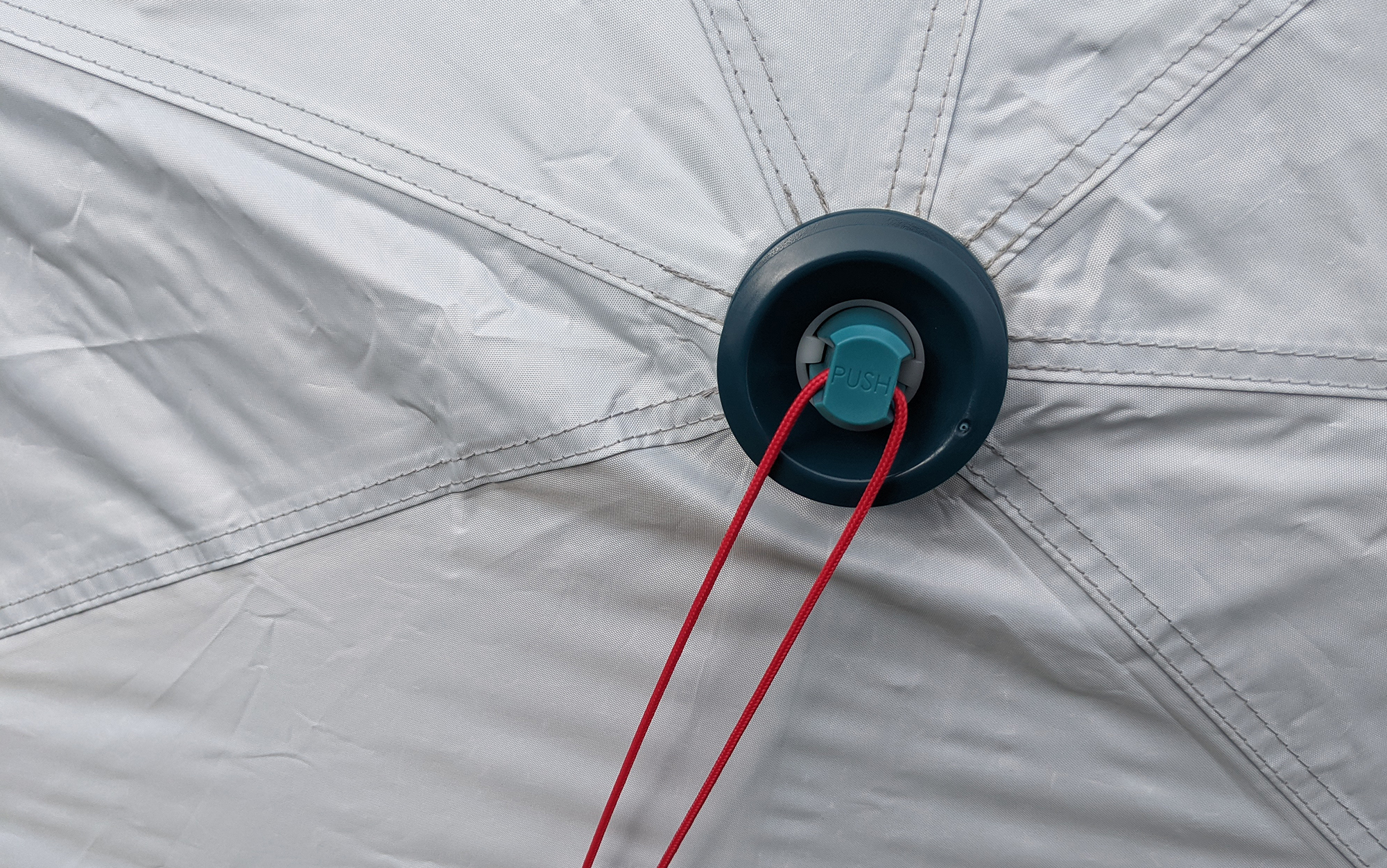
To tear it down again, you simply remove those stakes, then push the buttons attached to the red pulls. (If anything, this worked too well—I jumped a little at the speed at which the tent collapsed in itself with only moderate pressure applied.) Then simply fold up the tent (I highly recommend looking at the directions for this) and stuff it back into its bag. Like the MSR Habiscape, this one has a sideways opening (if not the same generous extra-large size), making this easier to deal with than vertical-open models. All in all, this was the fastest I had ever put away a camping tent, even though it was my first time doing so with this model.
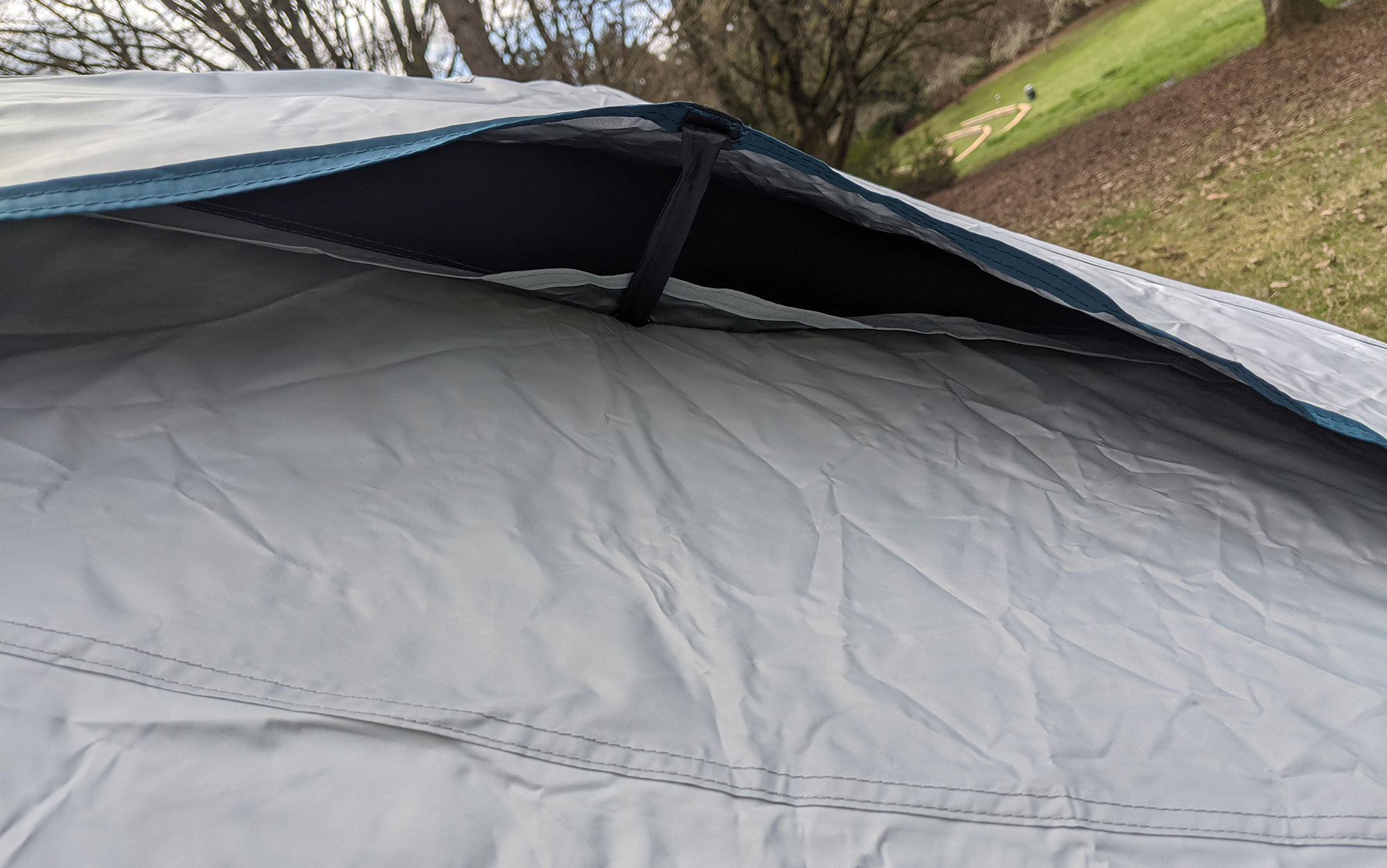
Unfortunately this tent is lacking in some details. The most obvious one is that there is no way to set up just a mesh body with this tent—the structure of the Decathlon Quechua 2 Second Pop-Up is attached to the rainfly. It also has fewer pockets on the inside than other models—only four small pockets plus a diamond-shaped overhead mesh storage area. Finally, it’s a little on the small side—even the three-person model of this tent would be a snug fit for two people.
Best for Winter: MSR Access 3-Person
Key Features
- Materials: 20D ripstop nylon and Easton Syclone composite poles
- Floor Dimensions: 29 square feet (for a two-person tent)
- Includes eight stakes and four guylines
- Doors: One to two
- Vestibules: One to two
- Weight: 3 pounds, 10 ounces (for a two-person)
Pros
- Virtually no condensation
- Comparatively lightweight
- Great stuff sack
- Easy setup
Cons
- Expensive
- Somewhat delicate materials require care
The hands-down winner of my test of the best 4-season tents was the lightweight MSR Access. It sets up easily with little fiddling to achieve a taut structure and had almost no condensation problems during testing. The lack of condensation is especially impressive given that nighttime temps dropped into the low twenties and the used had a hot water bottle stashed in the bottom of her sleeping bag. The temperature differential between the inside and the outside of this tent was substantial, yet moisture did not accumulate.
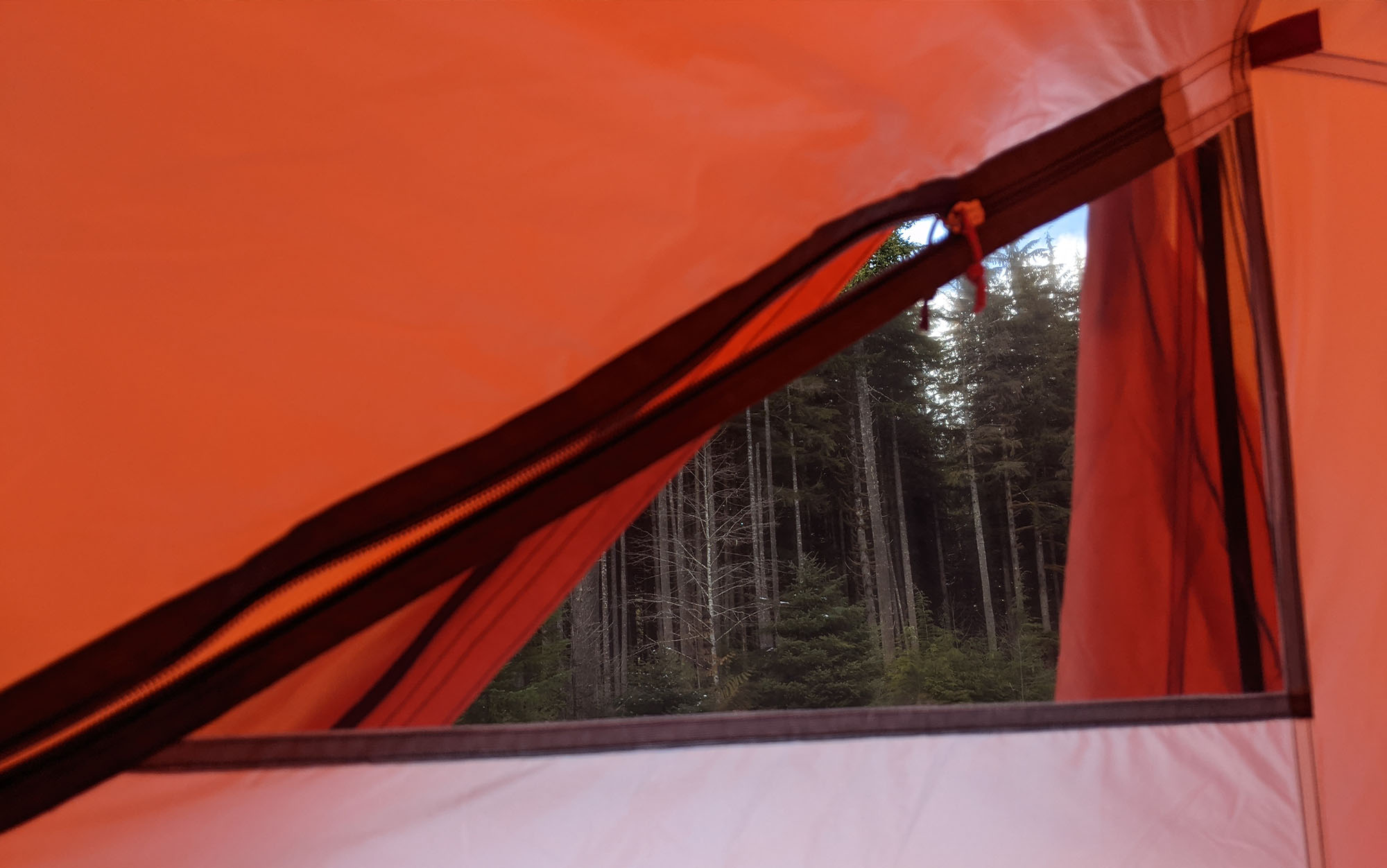
Unusually, the MSR Access achieves this exceptional ventilation with only one tiny window. The body of the tent itself—20D ripstop nylon—is breathable, helping the moisture generated inside your tent move to the exterior of the fabric. The rainfly’s design maximizes airflow by pushing moisture-laden air from inside the tent to the outside.
MSR’s Access was impressively easy to assemble. On the testing trip, my friend set up her Access before I finished with the NEMO Kunai. And, as winter tents go, this one is fairly easy to get into bombproof shape. S take out the vestibule and give the cinch cords at the ends of the rain fly a few tugs, and you’re good to go. I also liked that the MSR Access has guyline cords pre-attached to the tent. Even if they aren’t strictly necessary to use on your average winter backpacking trip, it’s not something you want to fiddle with too much if conditions turn dicey.
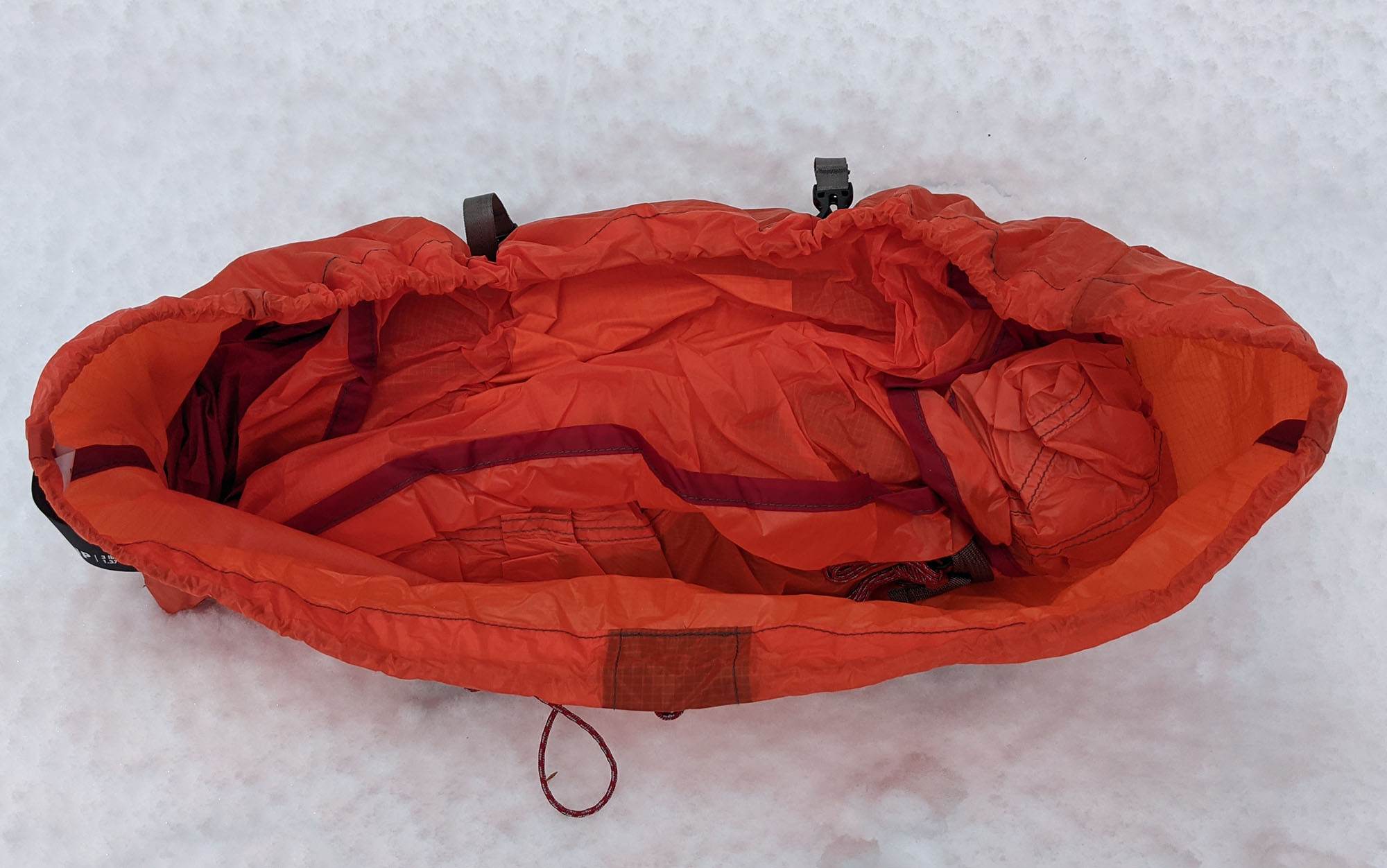
One small detail that made a big difference is the design of the MSR Access’s stuff sack. While most tent stuff sacks are longish cylinders with top openings, the MSR Access is a longish cylinder with a large wide side opening. This made packing away a wet tent a breeze, and saved both my and my tester’s fingers from getting unnecessarily cold during the quick cleanup to leave camp.
Best Eco-Friendly: NEMO Impact
Key Features
- Available in 2- and 3-person models
- Poles: Two
- Doors: Two
Pros
- Carbon neutral
- Easy to set up
- Light enough for some short backpacking trips
Cons
- Tight fit for two people
- Not available in larger sizes
The NEMO Impact looks and acts like a typical camping tent. A single pole snaps together to form the spine of the tent, plugging into each of the four corners. The mesh body snaps up into place, with a short third pole creating some extra overhead height, and then a rainfly is layered on top. If you’ve set up a tent in the last twenty years you’ll be able to figure this one out without the directions.
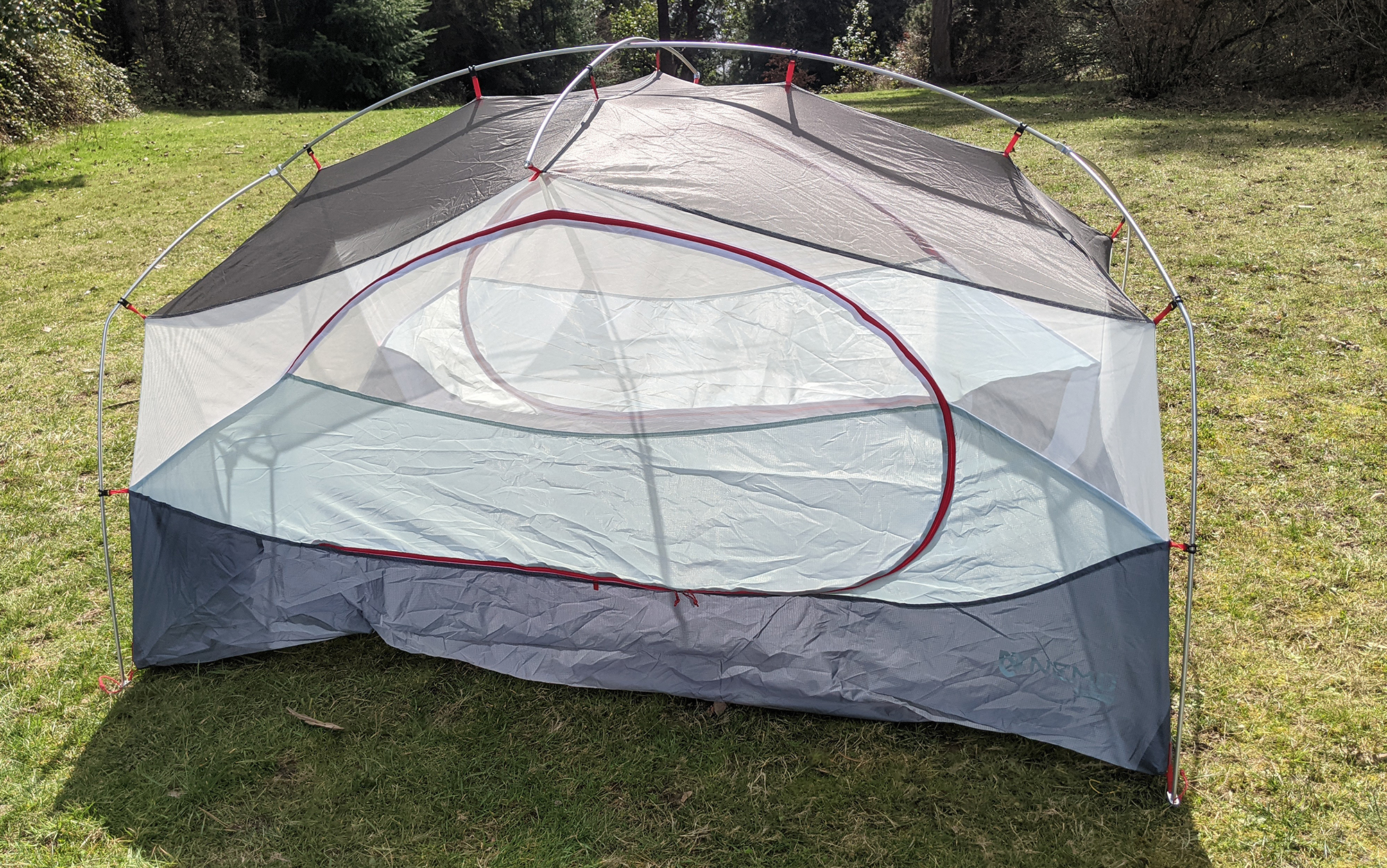
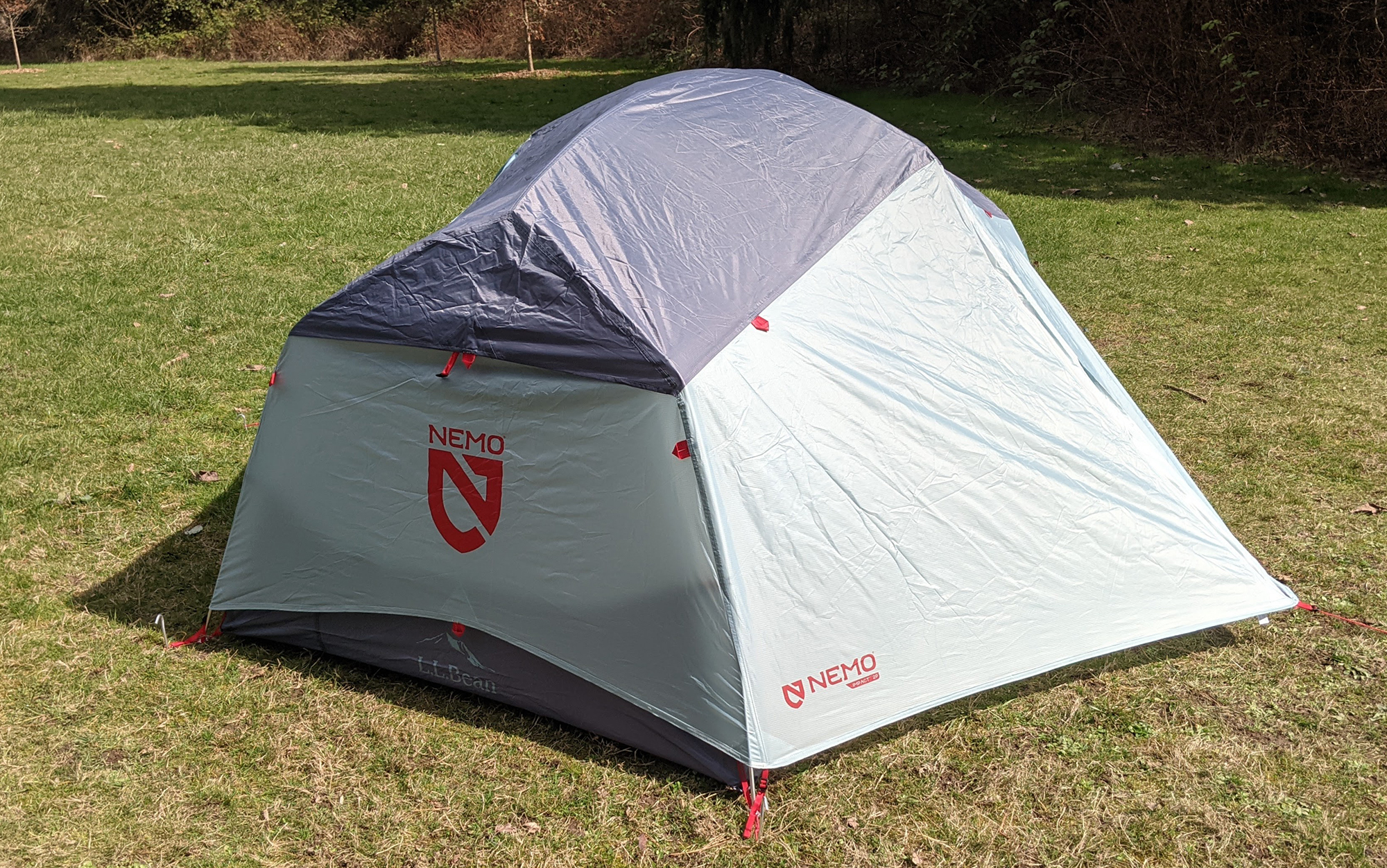
Where this tent shines is in its eco bonafides. Not only is an impressive amount of this tent made from recycled materials (the fly and main cabin panels are 100 percent recycled), but NEMO also made this one carbon neutral by purchasing carbon offsets from AMC’s Maine Woods Initiatives and looking at a number of lifecycle details, including the distance material traveled to the factory. (It also gets its water repellency without the use of harmful chemicals like PFAS).
Best Storage: Mountain Hardwear Bridger 4
Key Features
- Also available in a 6-person model
- Poles: Four
- Doors: Two
Pros
- Great storage options
- Massive front porch
Cons
- Somewhat difficult to set up
Let’s get the bad part out of the way first: This wasn’t my favorite tent to set up. While things started off promisingly with color-coded poles and grommets, I ran into problems almost immediately. It turns out that while the color coding helps to show you what side of the ground sheet the tent should be set up on, it does not indicate which way the doors should be oriented—something I figured out the hard way when I was halfway through setup. I also struggled with the top clip. Not only was the clip not large enough to hold all three poles, it was surprisingly difficult to reach from the edge of the tent. Finally, I was disappointed with the provided options for securing the tent in case of inclement weather—there were not enough stakes to take advantage of the guylines and the velcro holds for the poles were only located on the lower half of the rainfly. I was unable to get the tent as taut as I would have liked, even after spending considerable time adjusting it.
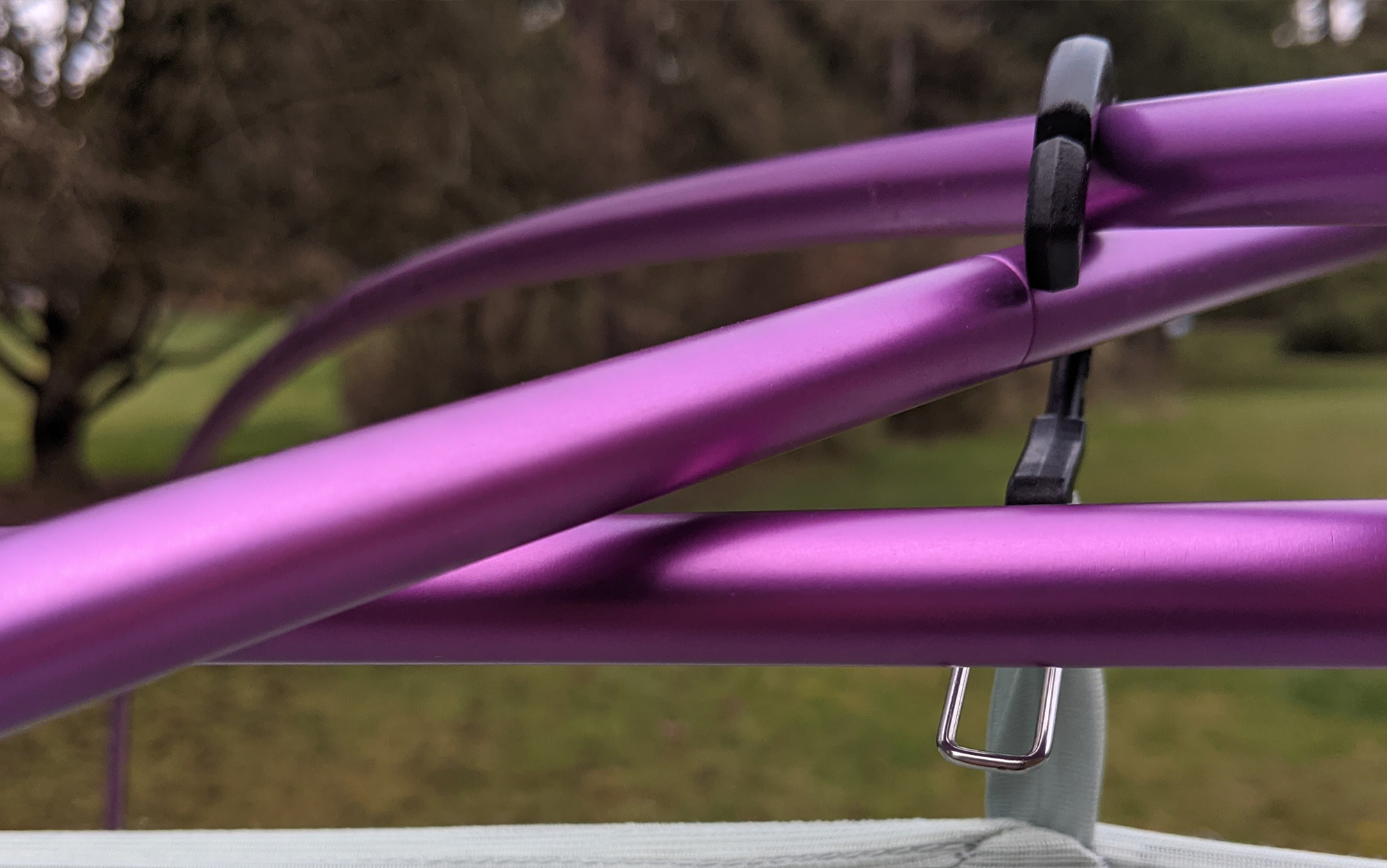
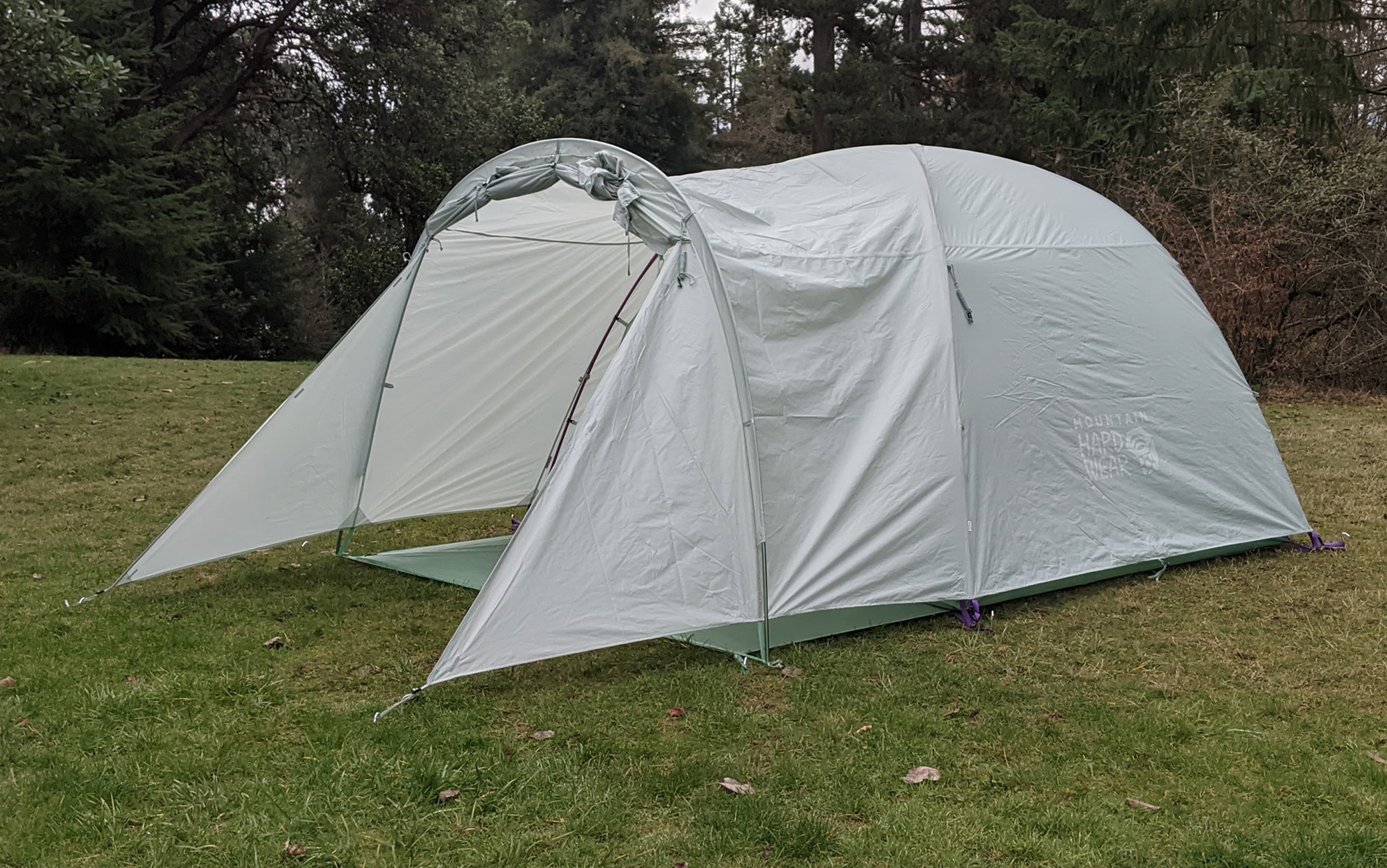
Eventually I did get the tent up, and I was happy I did. First off, this tent has the largest front porch I have ever seen. This thing is legit huge—if you need to get your bike out of the rain, this thing will do it. I also liked that it had a floor (useful in muddy, sandy, or otherwise undesirable terrain). And the whole thing was super secure, with the tent’s fourth pole holding the edge of the awning out and an elastic band at the bottom holding the front porch taut. There are even storage pockets inside the front porch. This is the solution to bad-weather camping that you didn’t even know you needed.
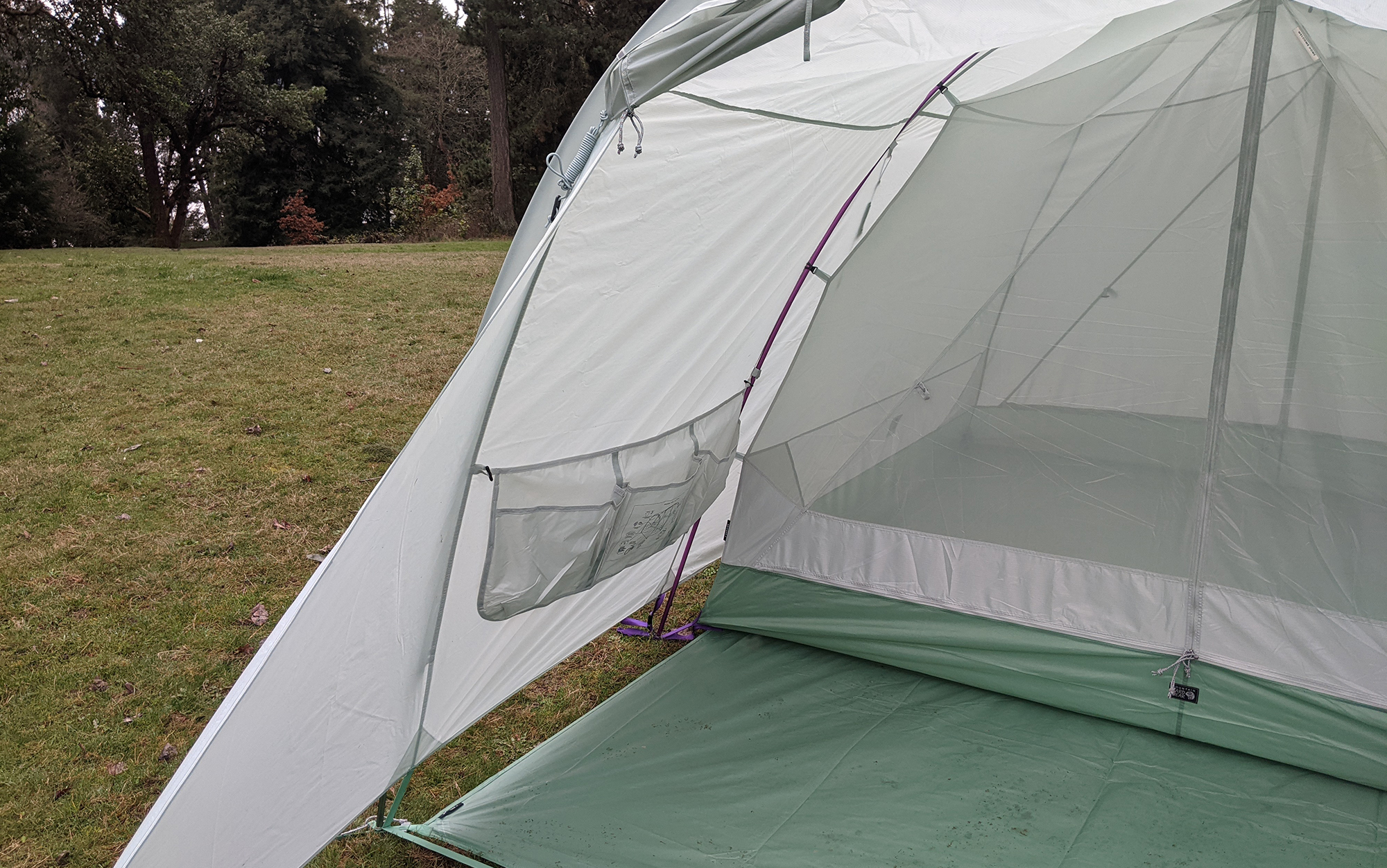
The interior was also spacious and well thought out, with plenty of headroom for this five-foot-five gear reviewer as well as another six pockets to stash all your odds and ends.
How to Choose the Best Camping Tent
Square Footage
As anyone who has bought a tent knows, the stated number of people a tent can fit and the actual number of people you would want to fit in a tent can vary significantly. And gear like sleeping pads and sleeping bags will quickly take up room. Check the dimensions of any tent you are considering to determine whether it will fit the family or group you will be camping with.
Ease of Set Up
Most 8-person tents require two people to set up, which can be a challenge for families with small children. In those instances, speed is king. One rule of thumb that can help you determine how long it will take to set up a tent is to look at the number of poles. Typically, more poles will indicate a longer, more complicated set-up time, while a tent with fewer poles should come together relatively quickly.
Ceiling Height
One of the great joys of an 8-person tent is finally being able to stand up inside. The tents in my test had ceiling heights between just over 6 feet, all the way up to seven feet, but there was also variability in whether this height was at a single point or spread along the spine of the tent.
Packed Size
A large footprint unfortunately also means more space taken up in transit. If you have a smaller car, consider choosing an 8-person tent with a smaller packed size.
FAQs
Q: What makes a tent high quality?
The best tent brands are those that have decades of experience in the outdoors, be it camping or backpacking, and are attuned to how the engineering details of a tent make it more or less adaptable to different climates or weather conditions. Most, although not all, also use higher quality material that will typically last longer than lower grade nylon or polyester. Finally, a high-quality tent will have a long warranty period—if a manufacturer isn’t willing to guarantee their tent for more than a season, it probably isn’t any good.
Q: How do I make tent camping comfortable?
The biggest factor in camping comfort is warmth. If you’re cold, you’re going to be uncomfortable. Purchasing a high quality sleeping pad will not only cushion you against the ground, but it will also insulate you from the cold of the ground. When choosing a sleeping bag, look for something rated at least twenty degrees lower than what you expect your coldest overnight temp to be. Bring blankets. Lots of blankets.
Q: How do I insulate a tent for winter camping?
You cannot insulate a standard camping tent for winter. Consider purchasing a winter tent (which will provide additional insulation and structural support against snow loads) or looking into warmer layers and a sleeping bag.
Q: How much does a camping tent cost?
Camping tents can cost anywhere from $100 to upwards of $1,000 or even more depending on their size and level of quality.
Why Trust Outdoor Life?
Since 1898, OL has been a leading authority in testing and reviewing hunting gear, fishing tackle, guns and shooting equipment, and much more. We have more than a century-long history of evaluating products, and we’re now bringing that expertise to online reviews. Our editors are experienced outdoorsmen and women, and most importantly, we’re trained journalists. We prioritize field testing and objective data when reviewing products. We conduct interviews with gear manufacturers and engineers as well as outdoor experts so that our readers have an understanding of how and why a product works—or doesn’t.
Advertising does not influence our gear reviews and it never will. While we always focus our coverage on standout products—because we want our readers to be aware of the latest and greatest gear—we also cover the flaws and quirks of any given product.
Final Thoughts
There is an impressive array of camping tents available, from massive 8-person palaces (with headroom for the whole family to two-person tents that are really only big enough for one. We’re confident that any of the picks on this list would serve you well on your next trip to the great outdoors.

